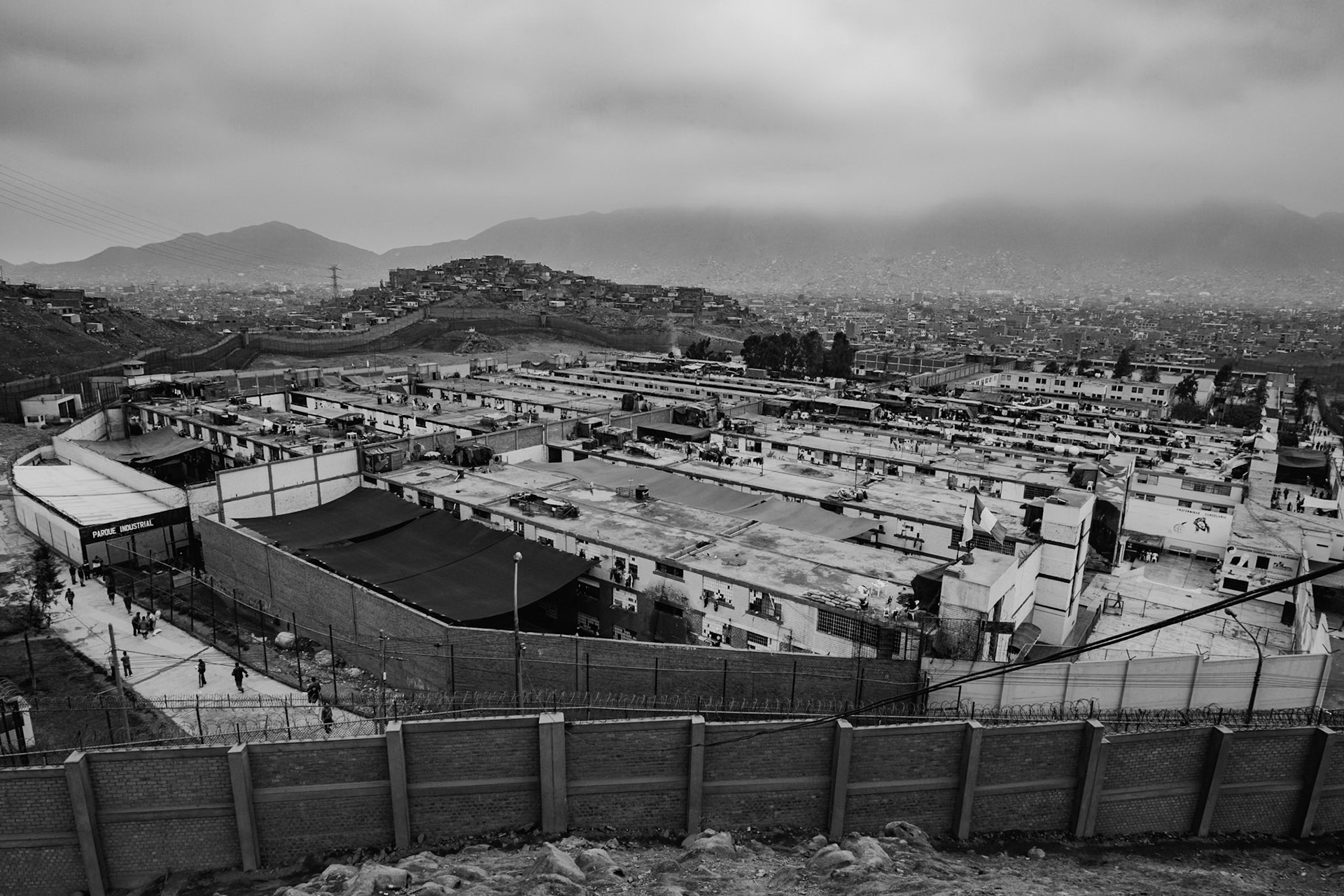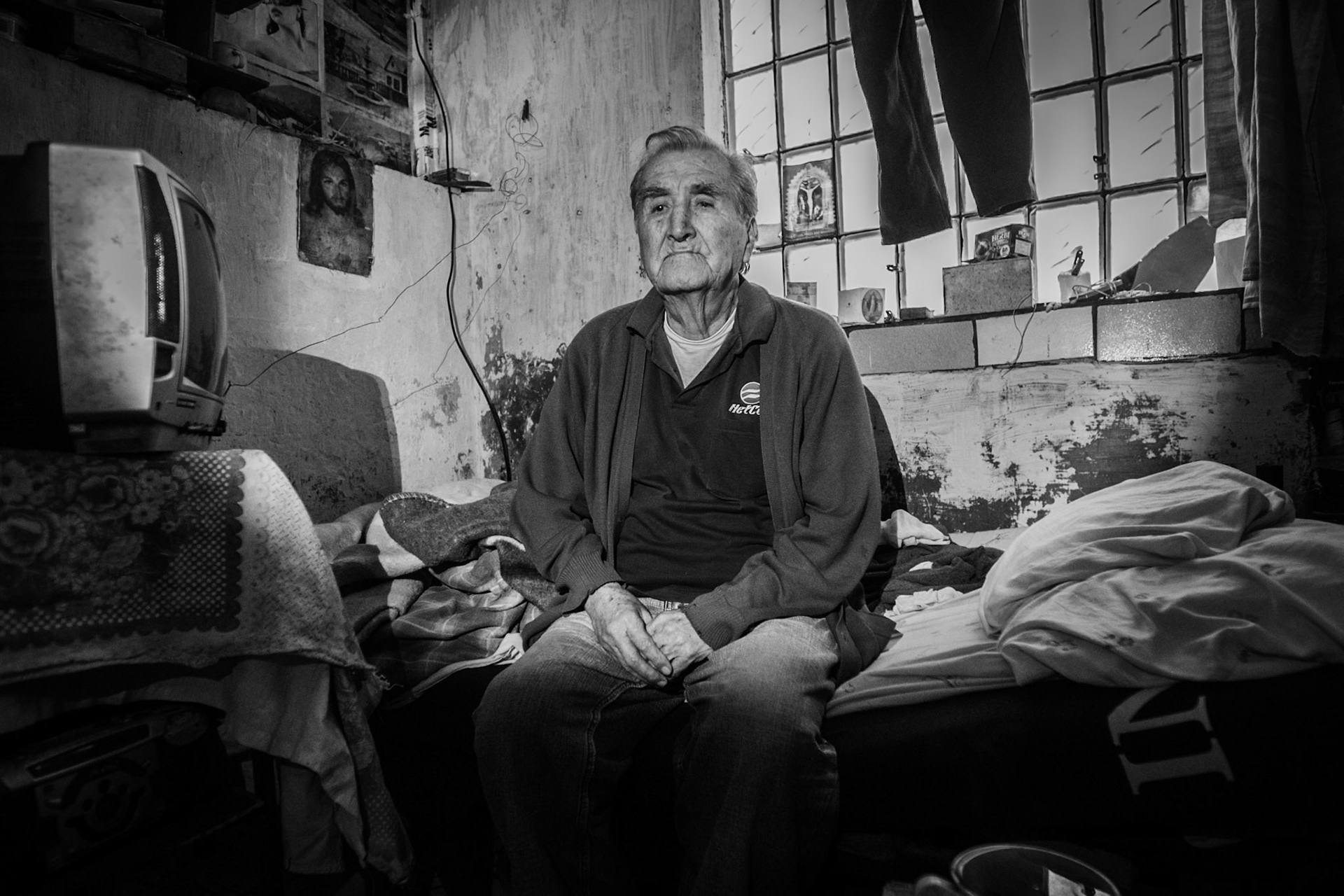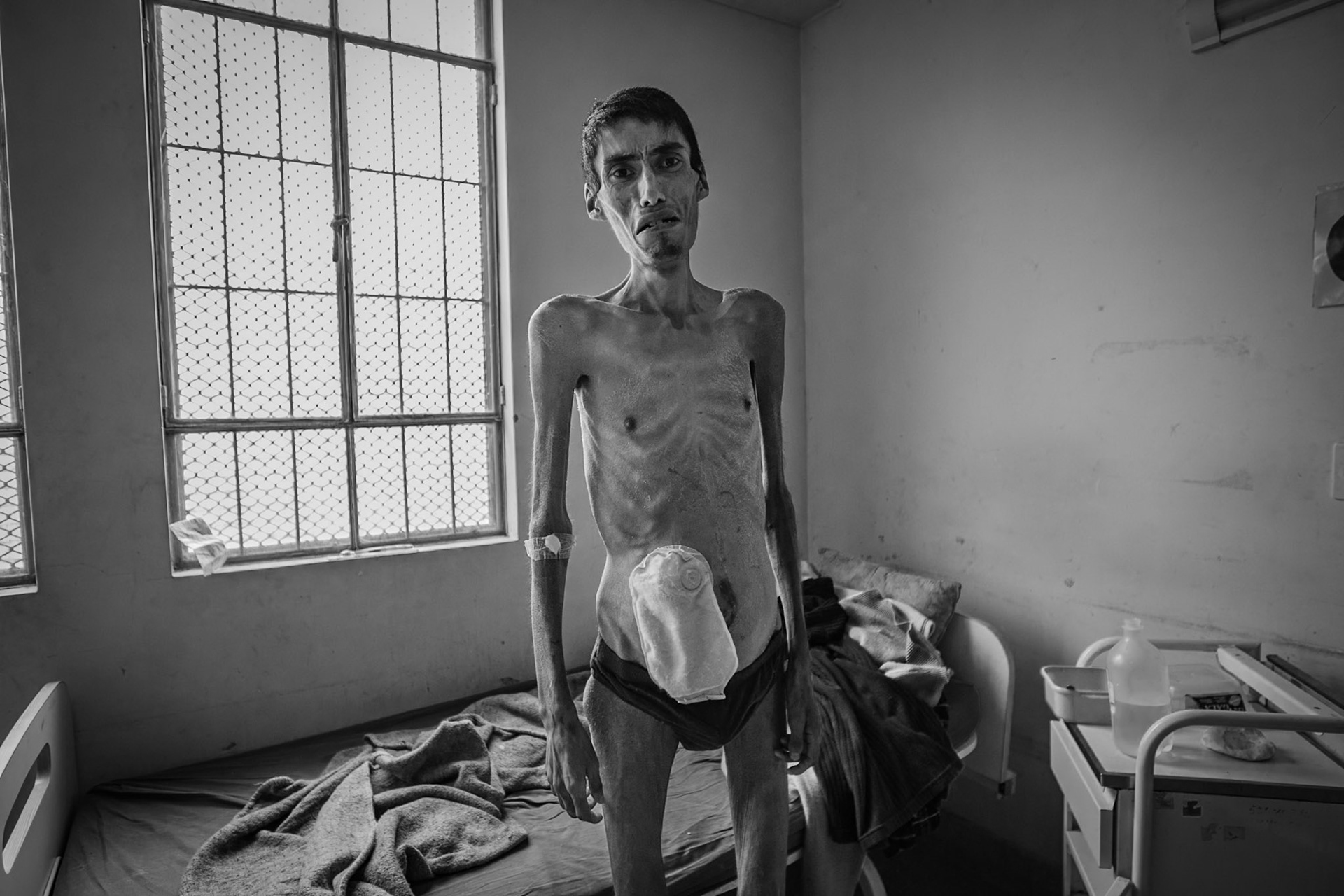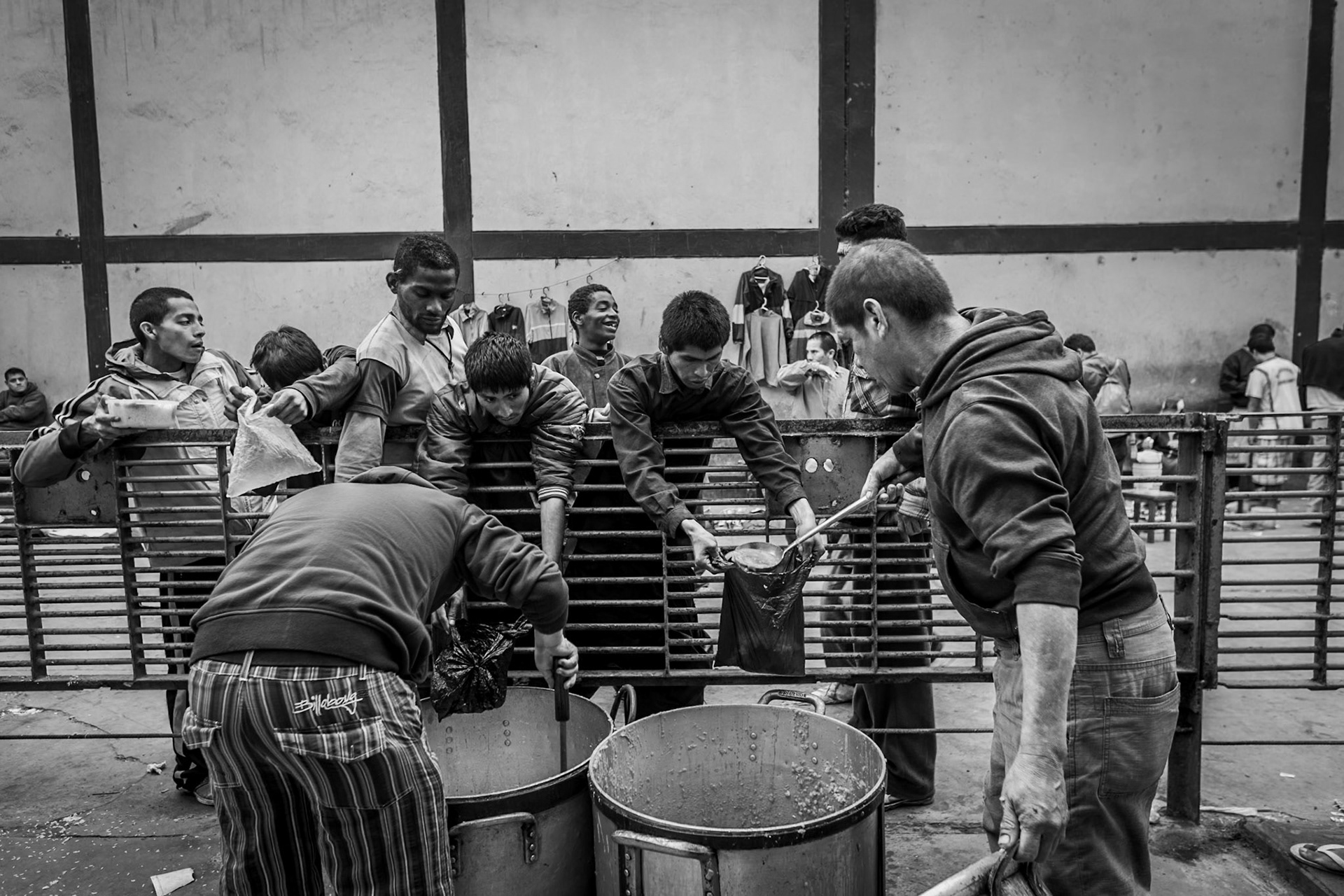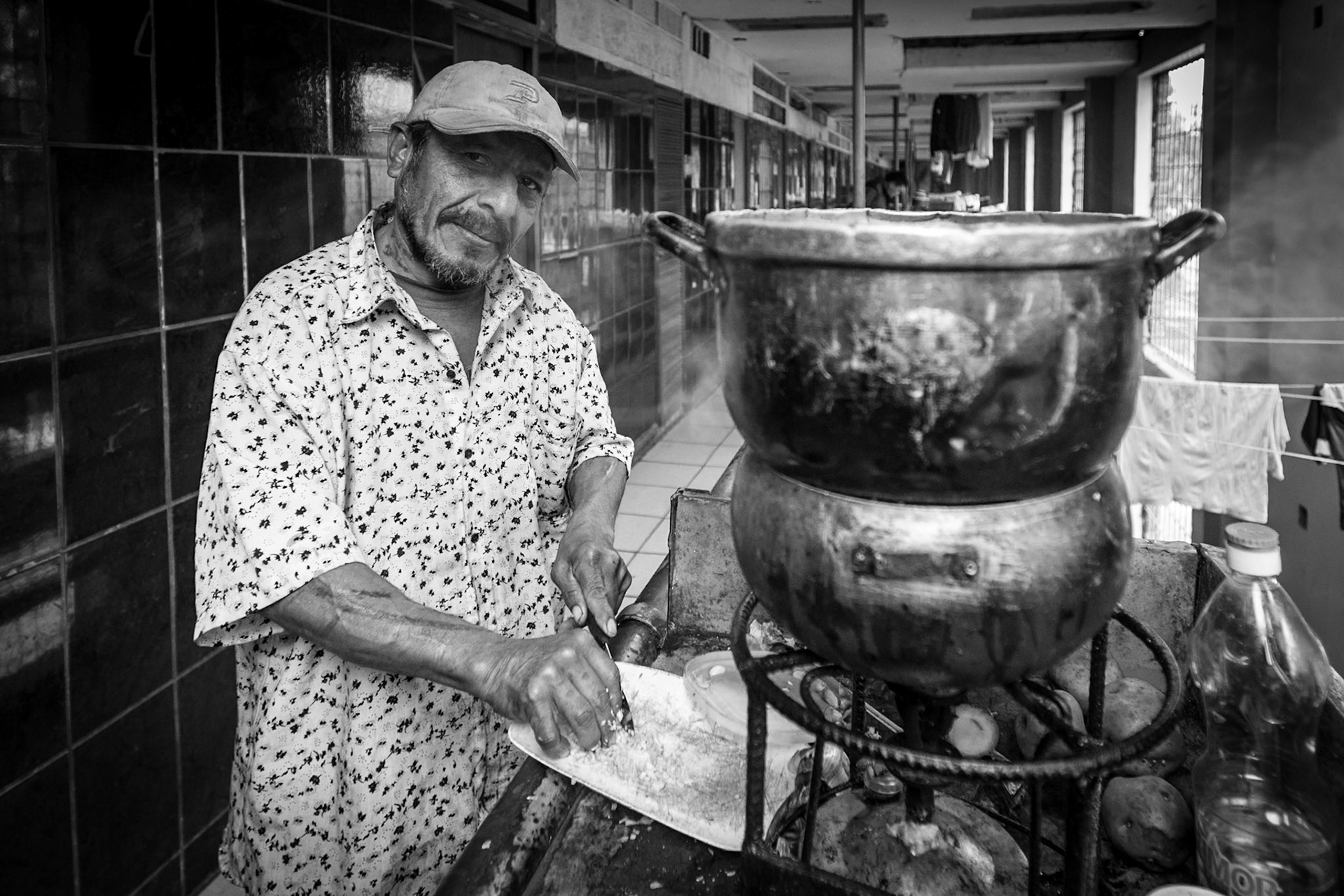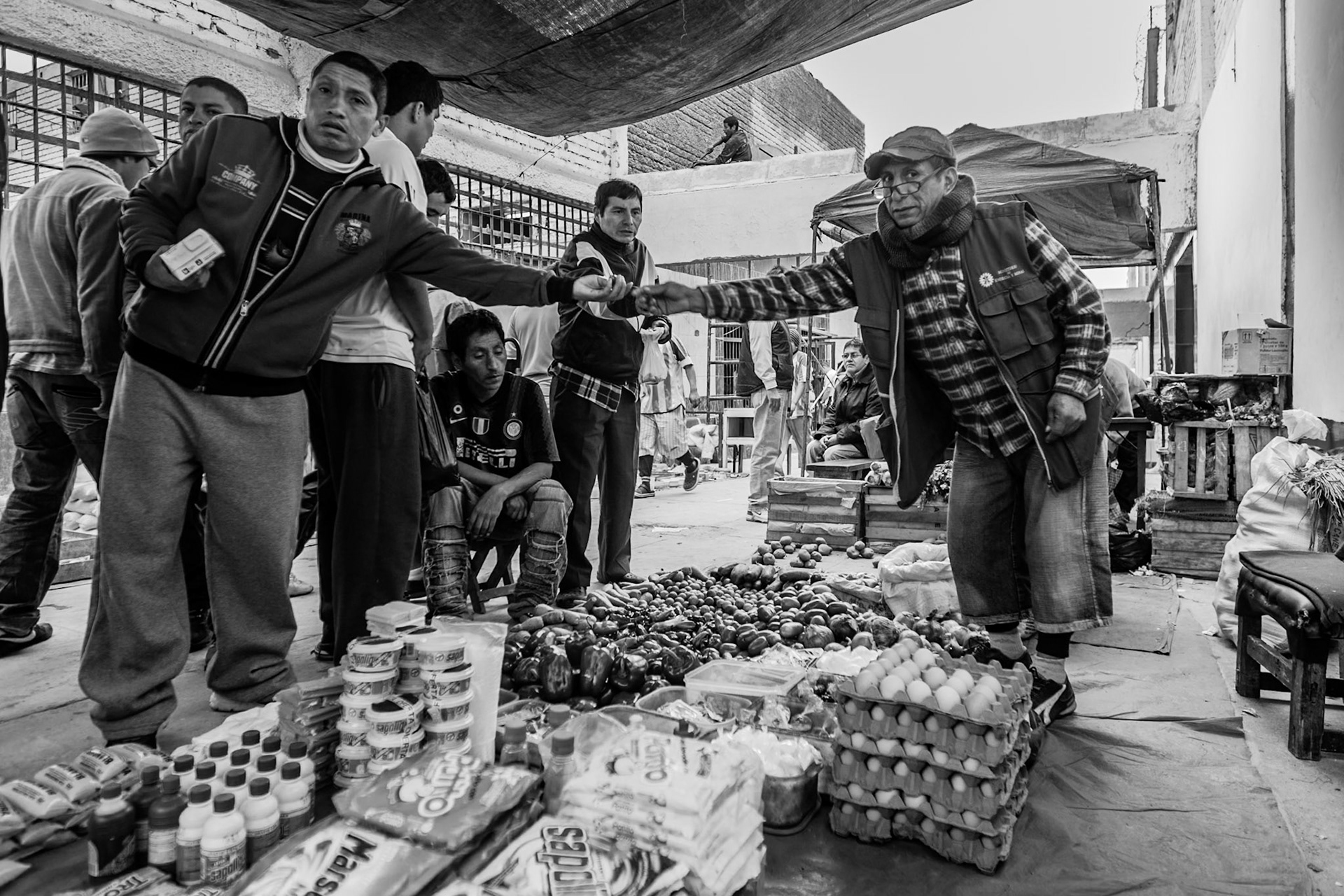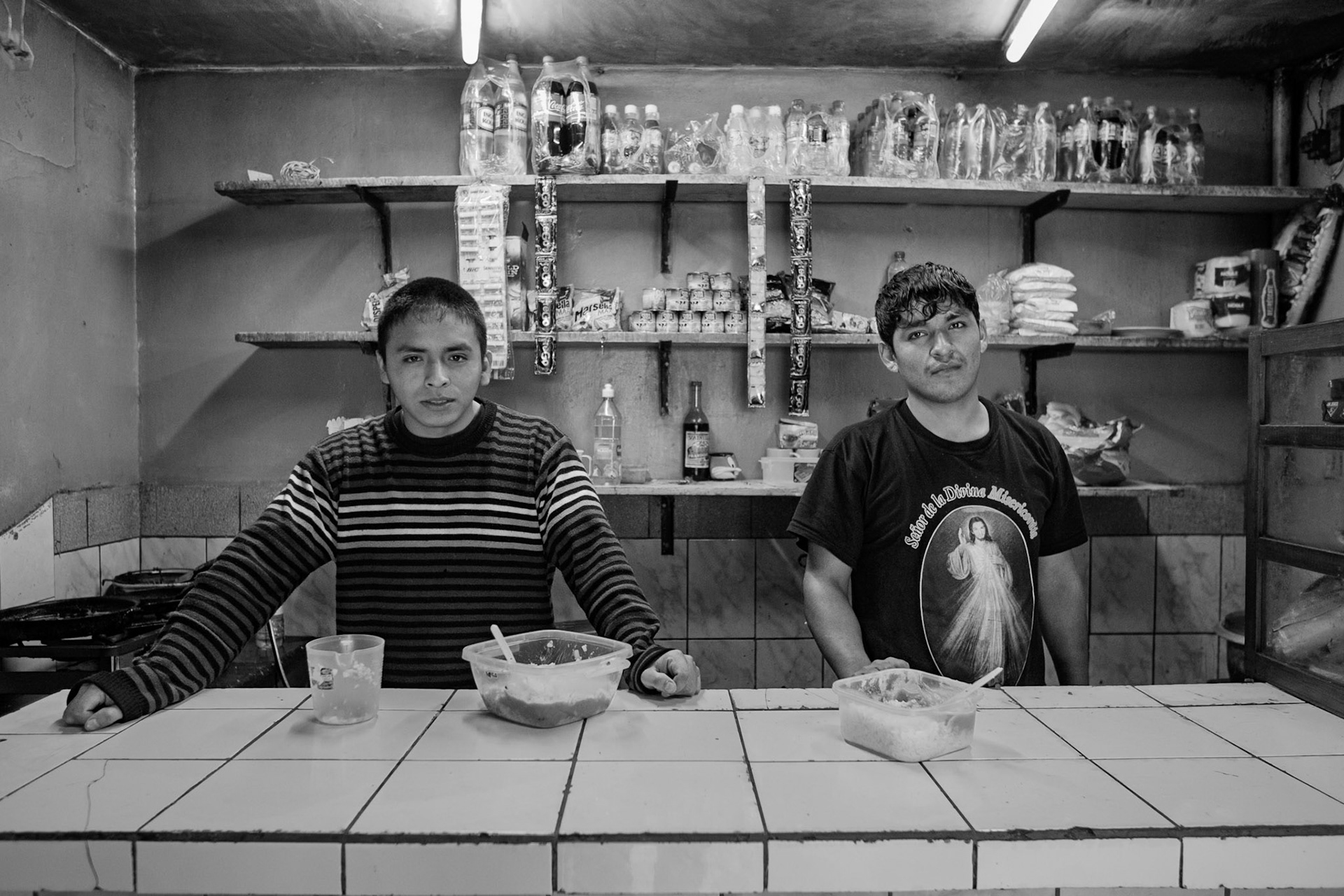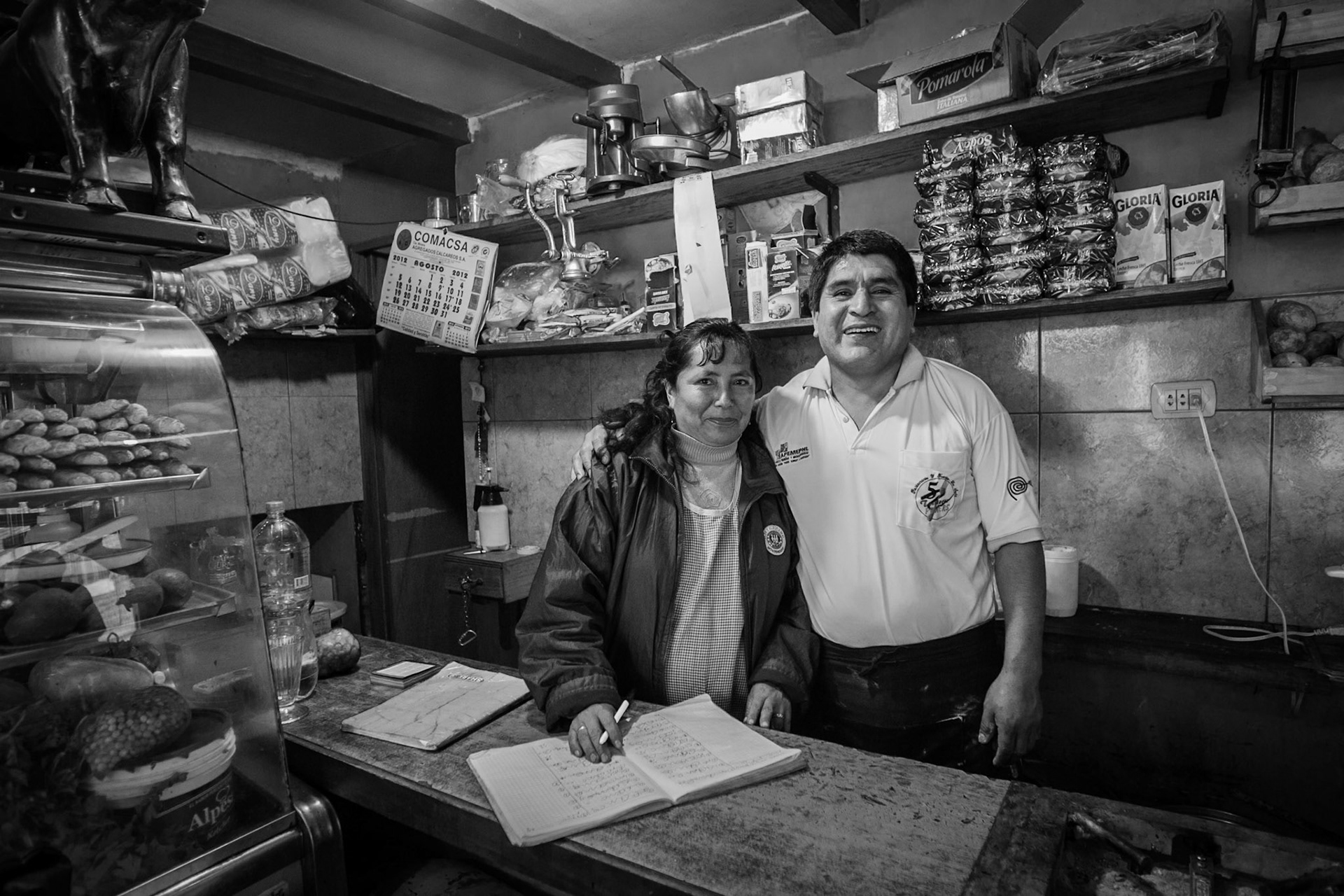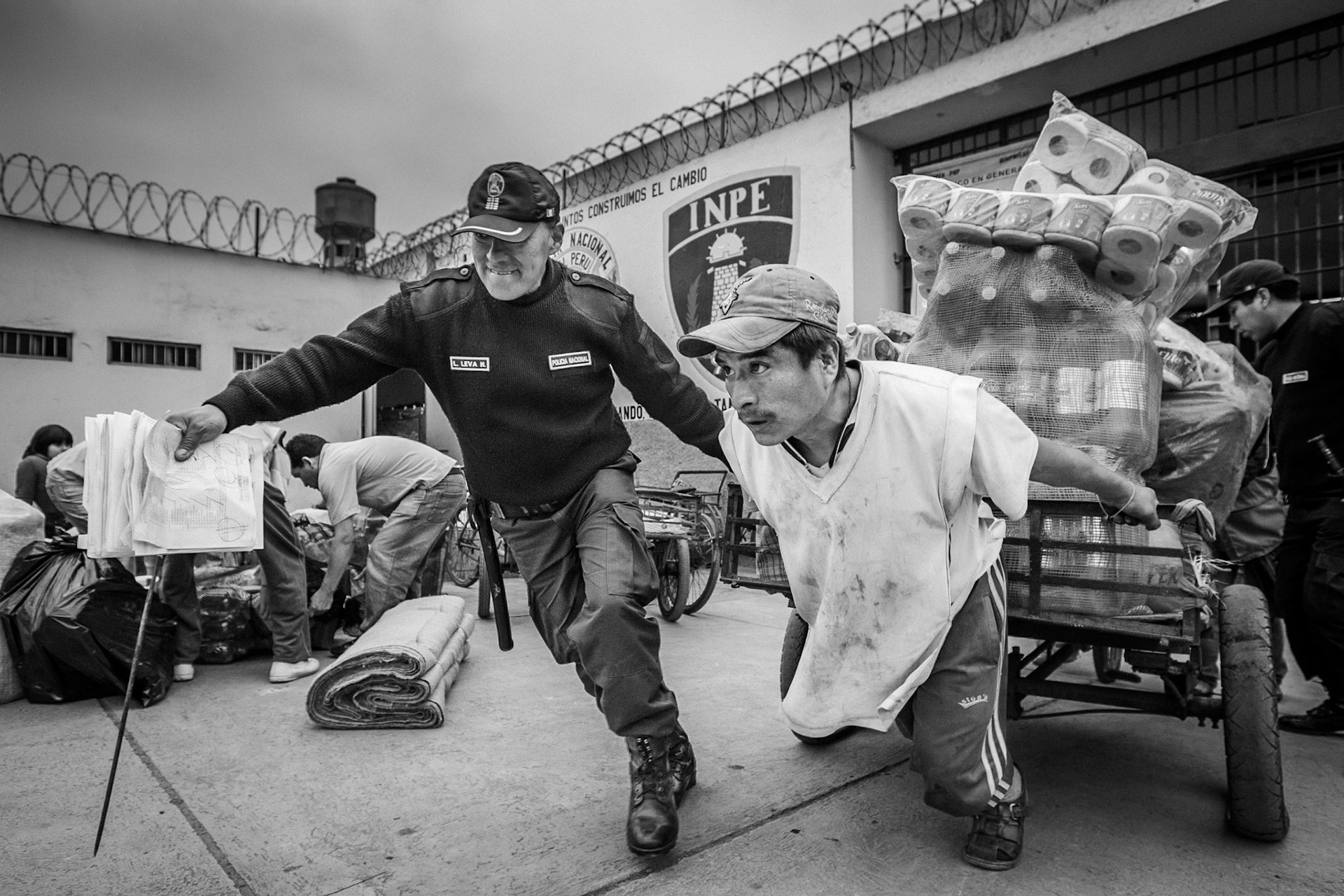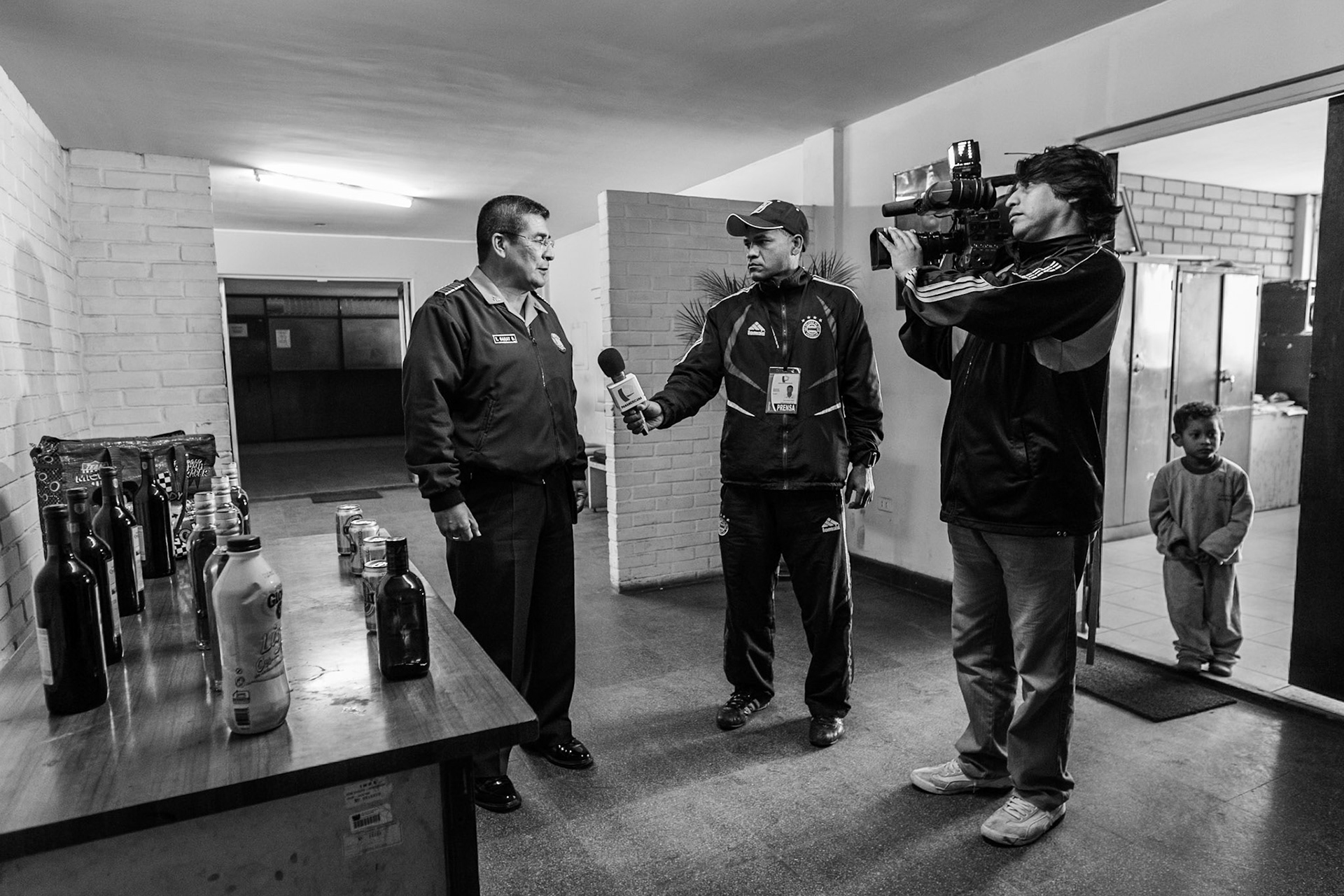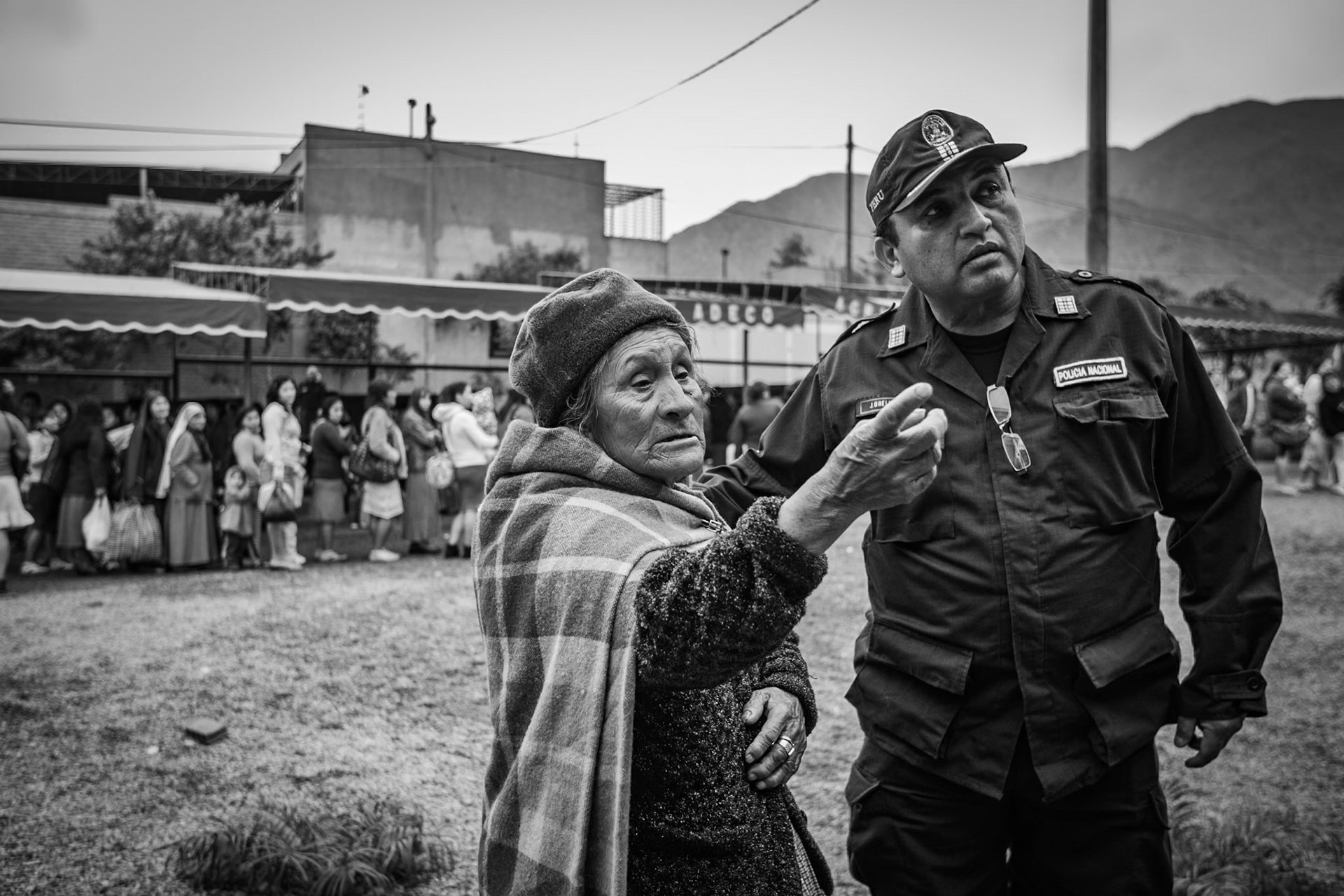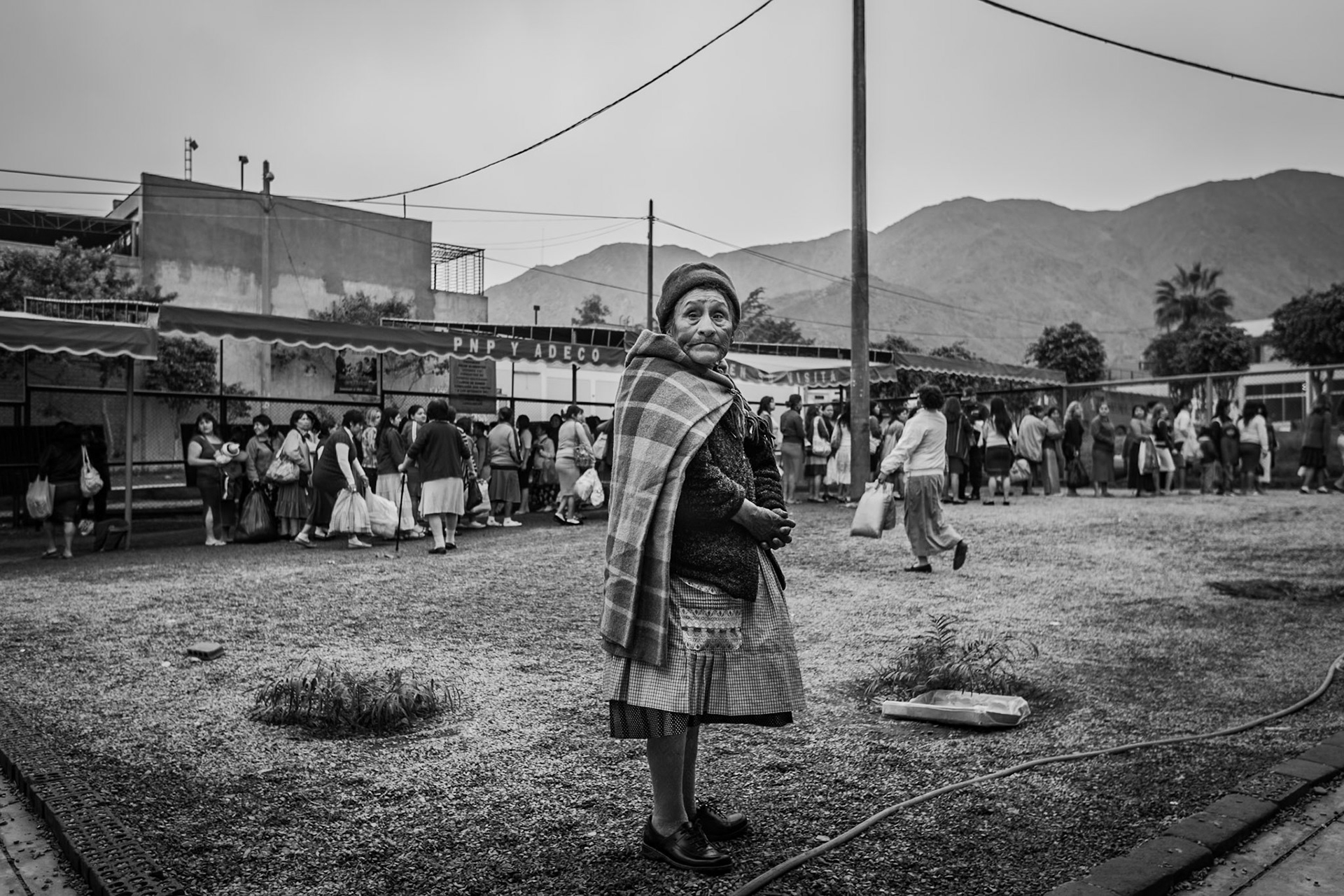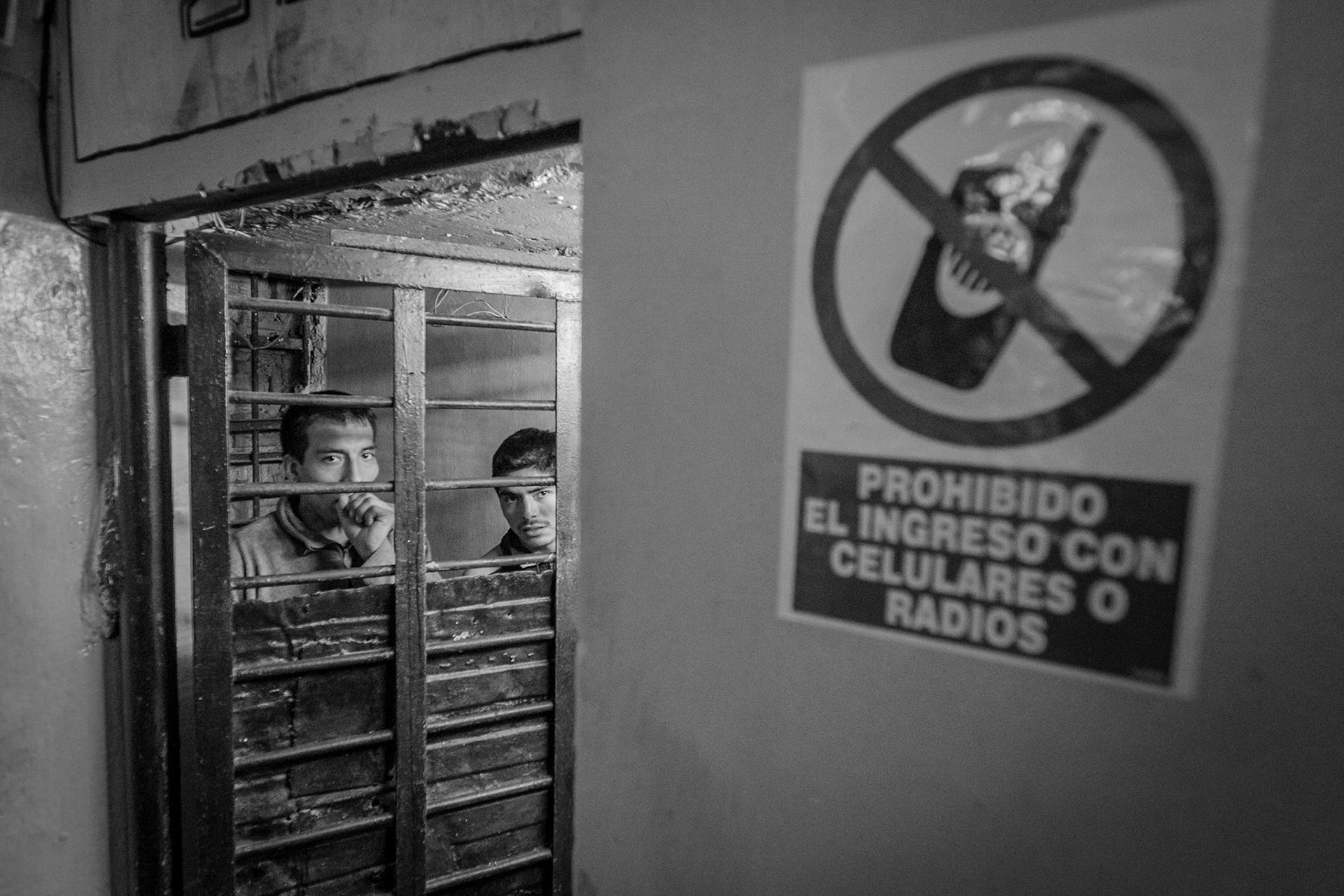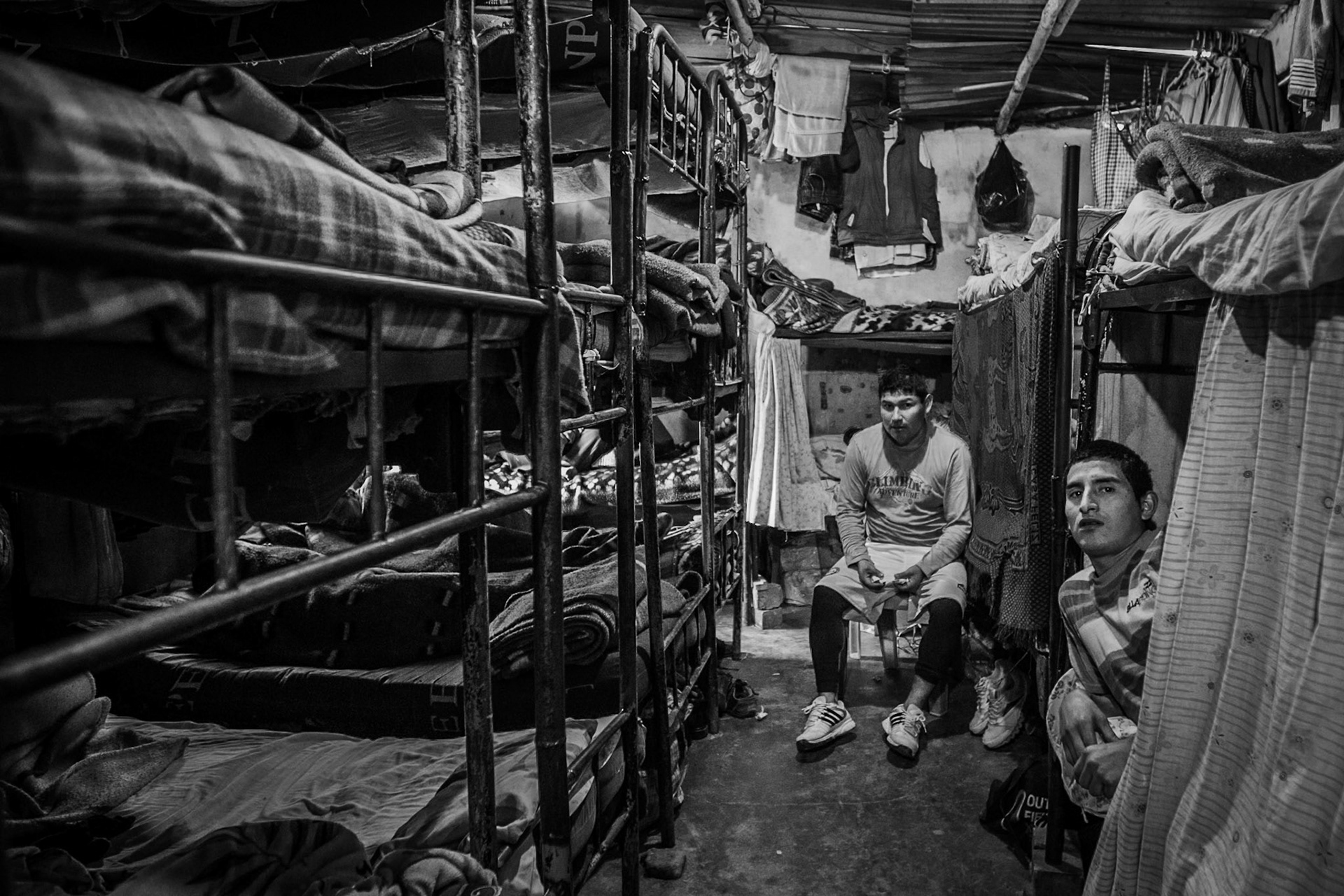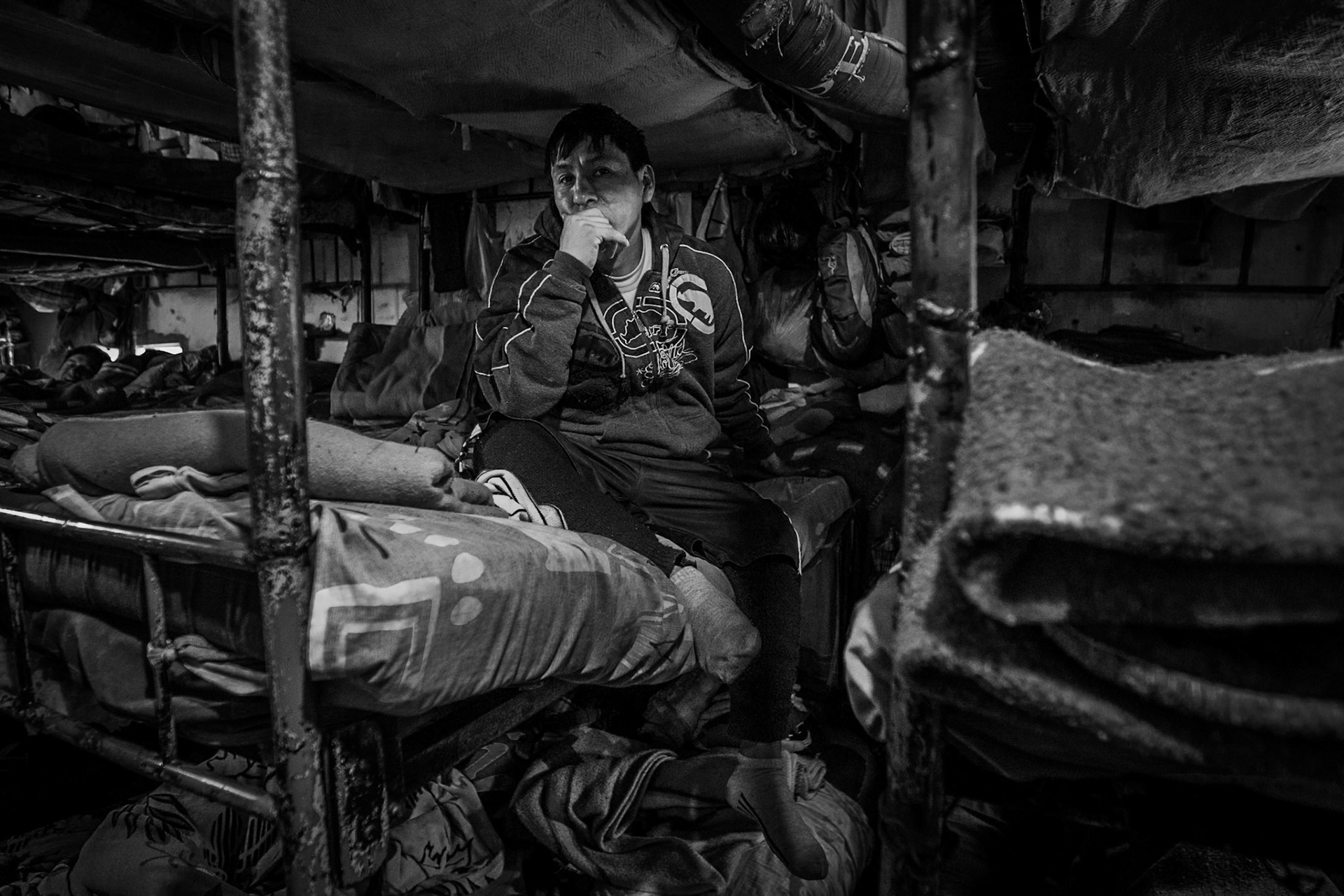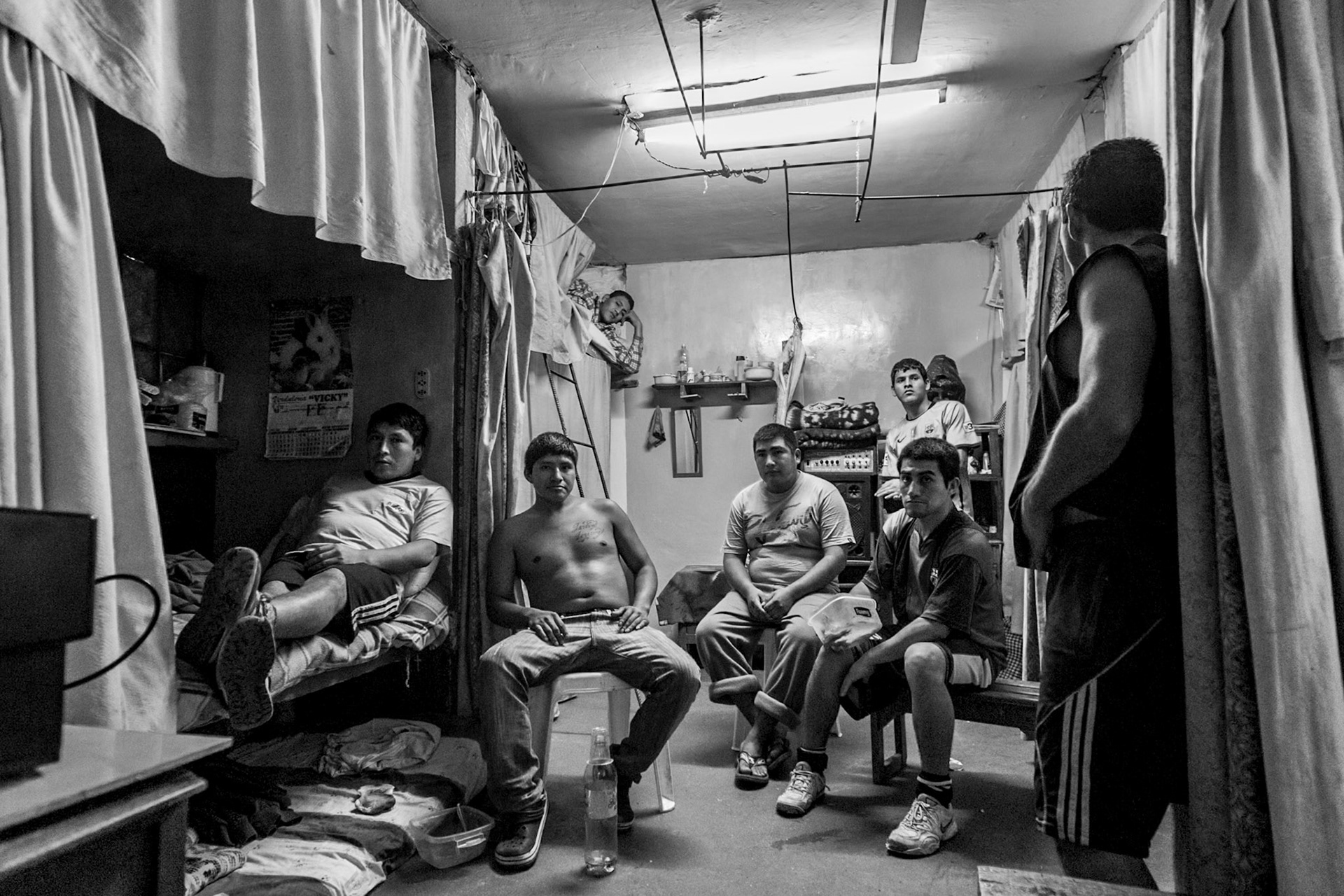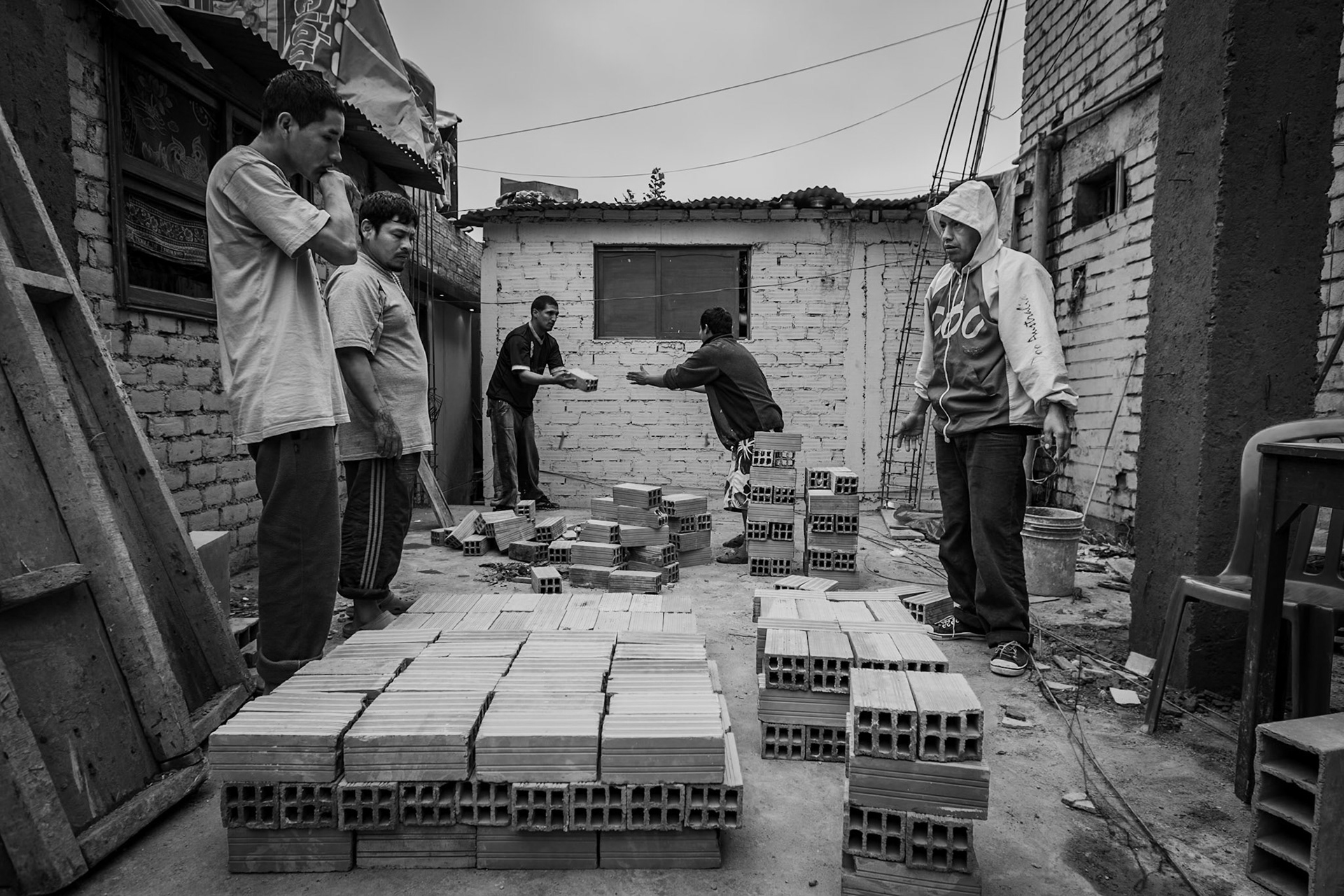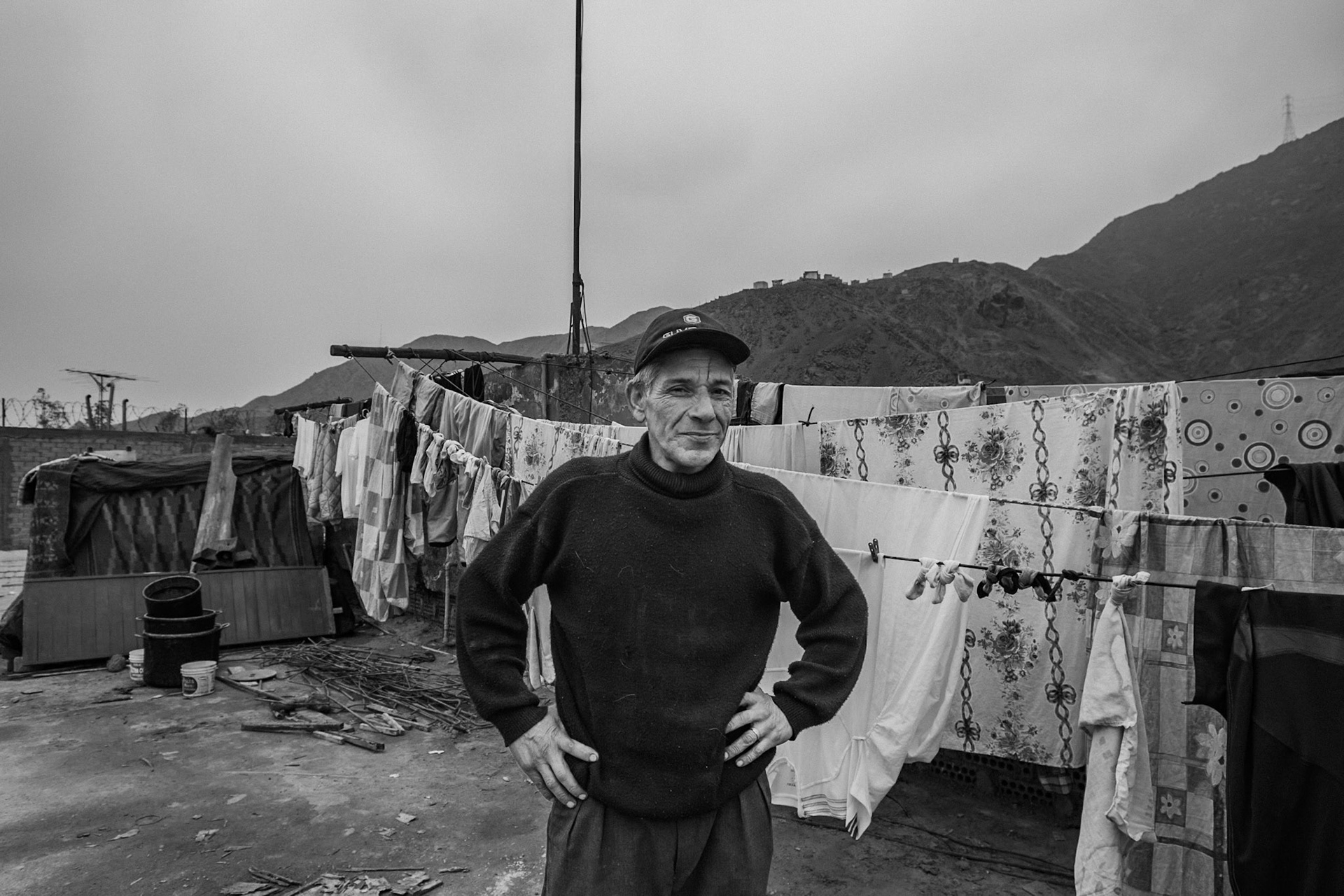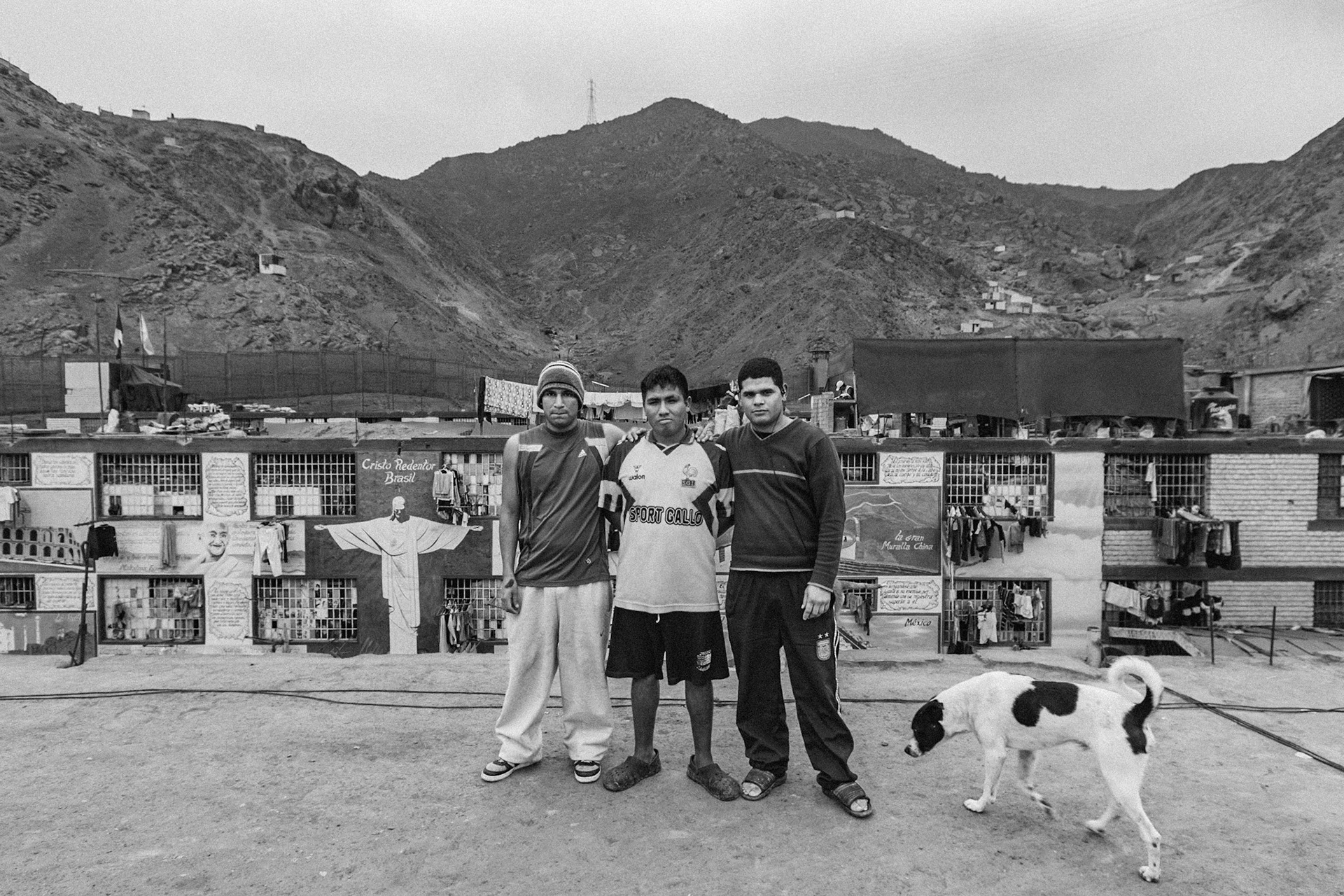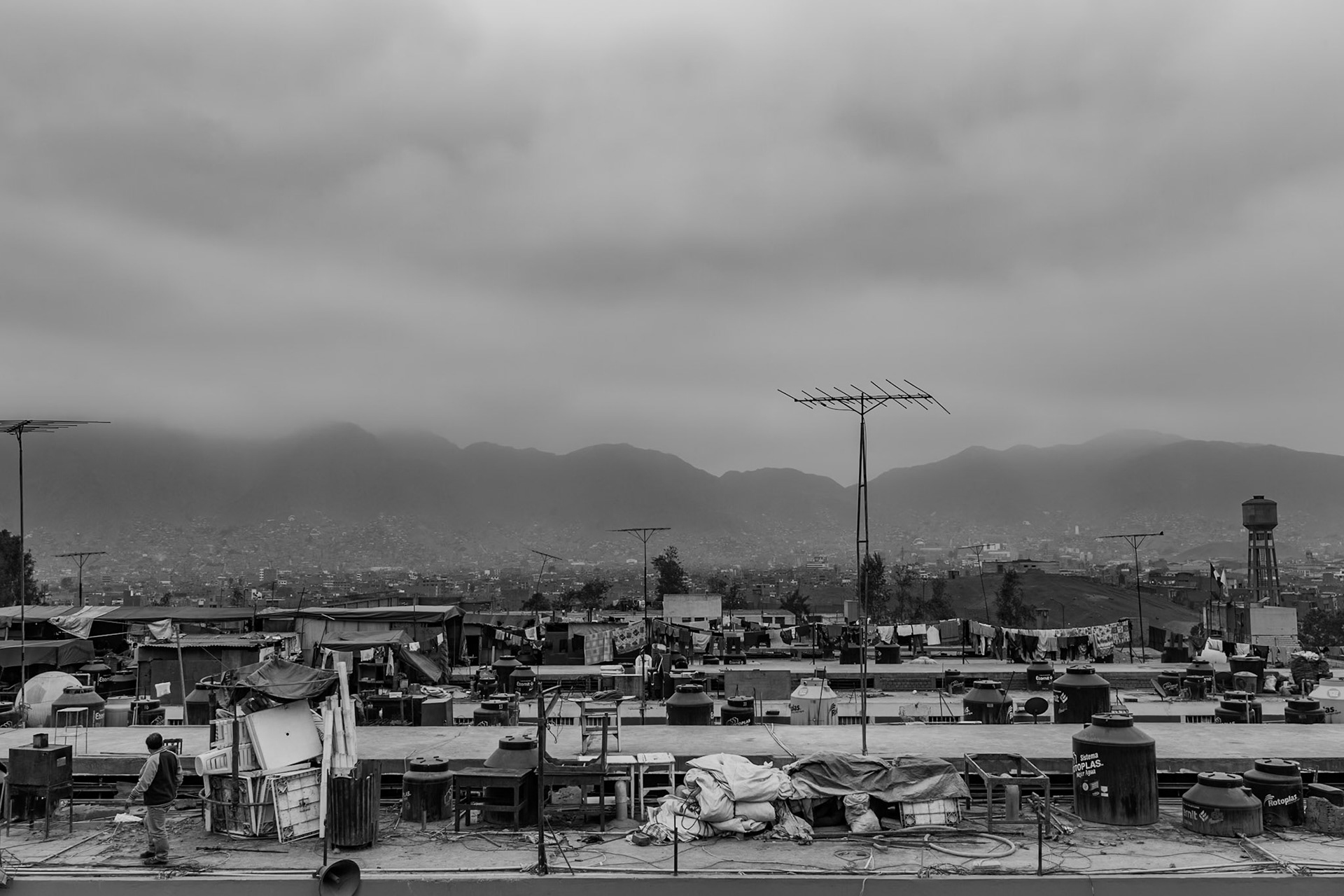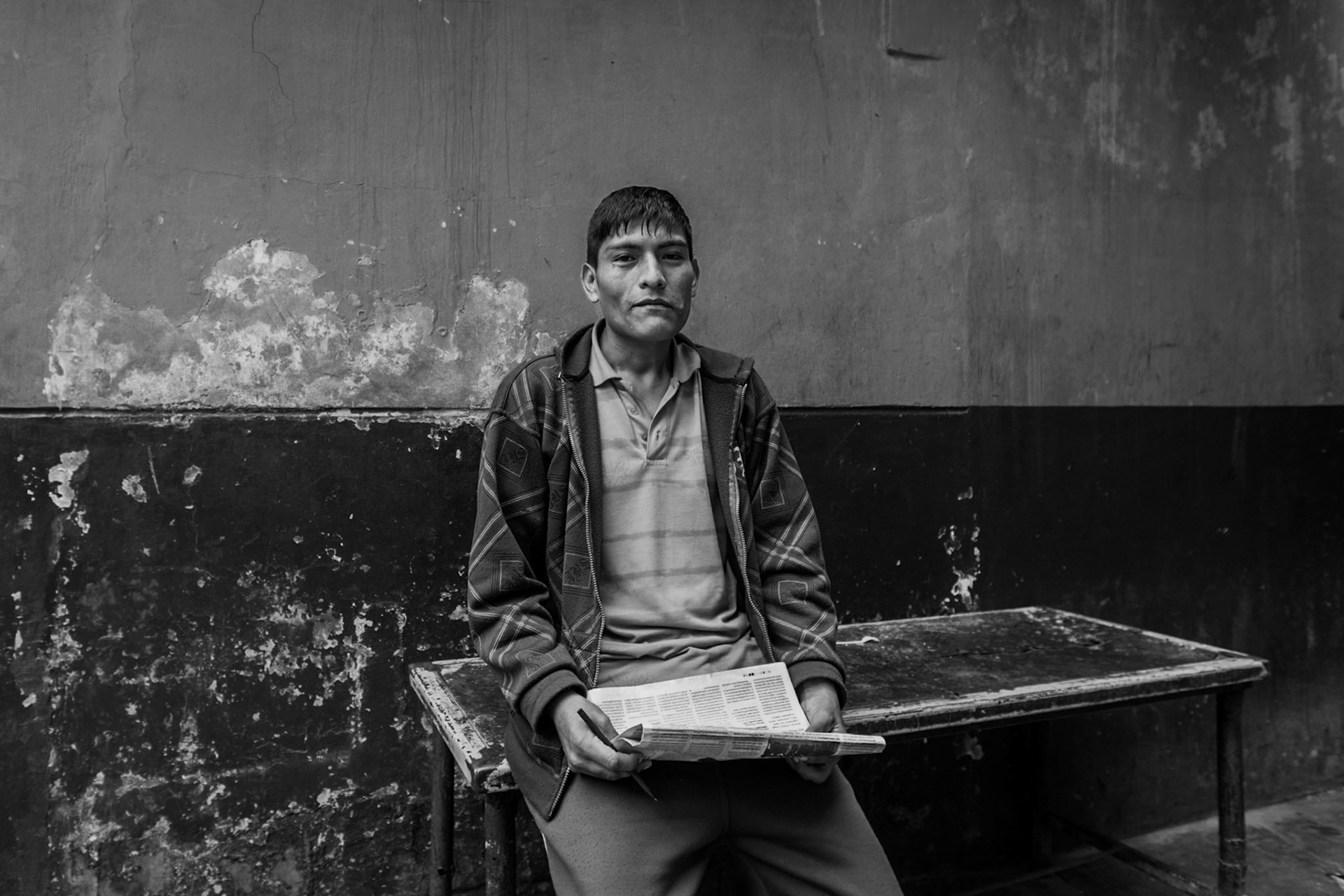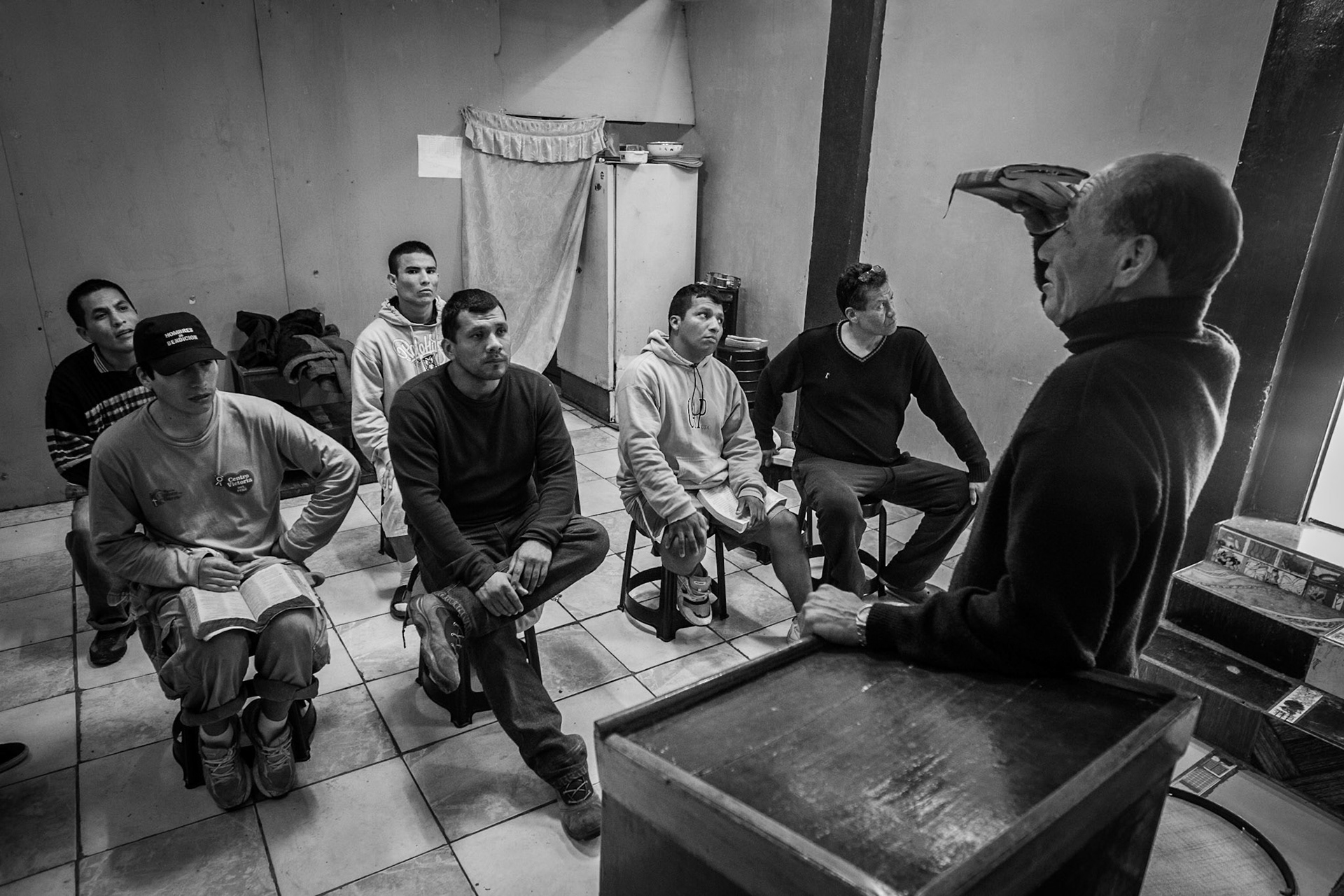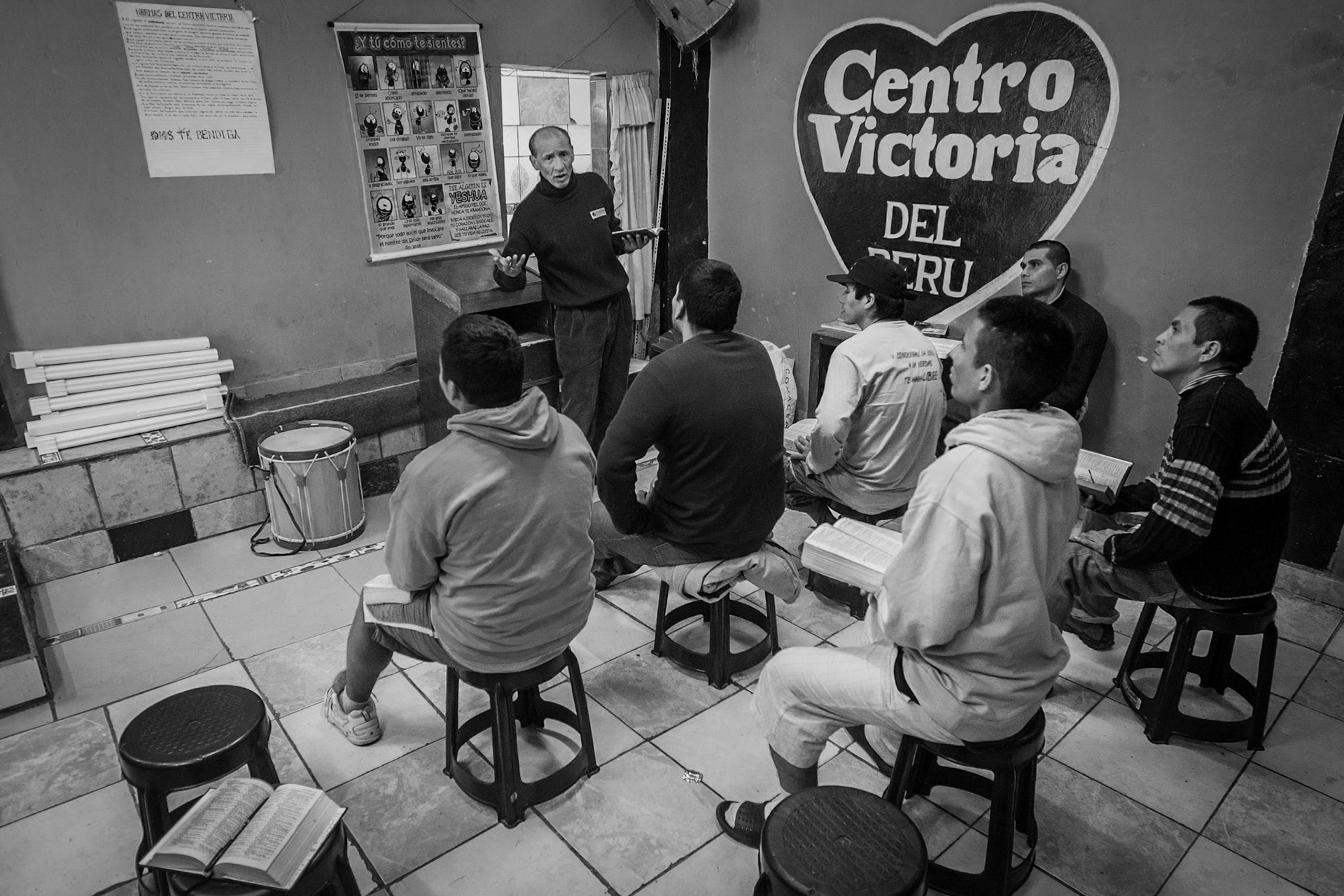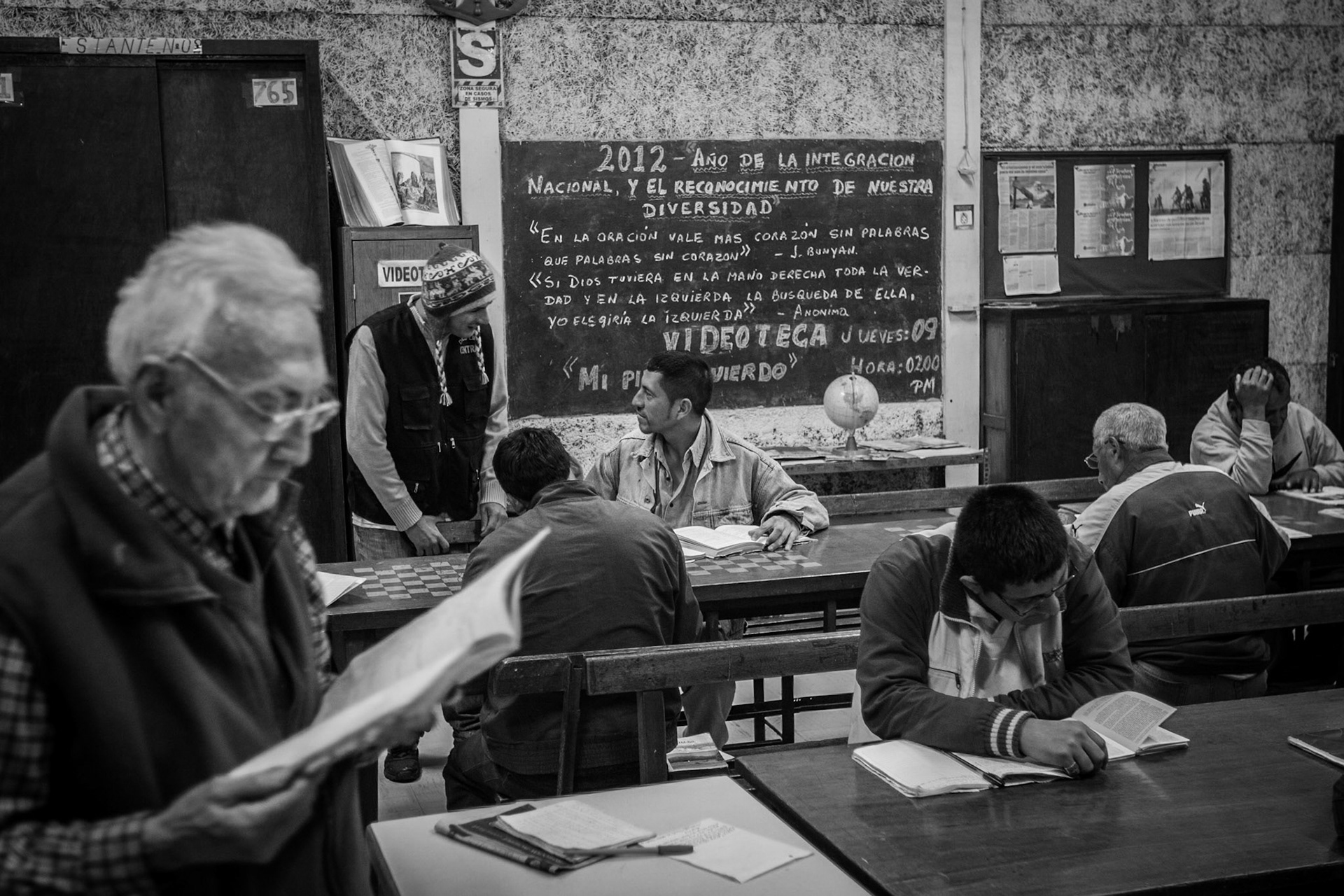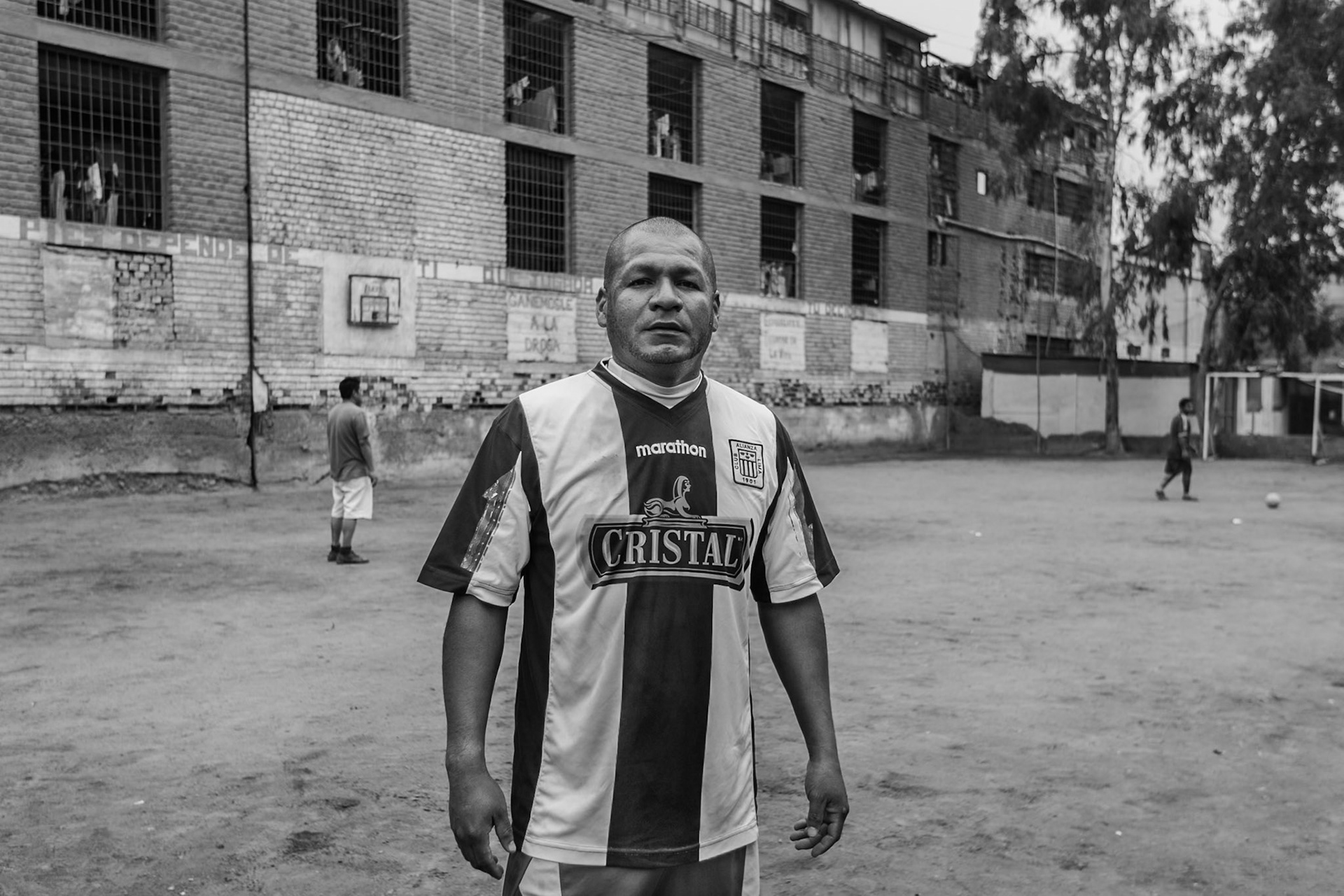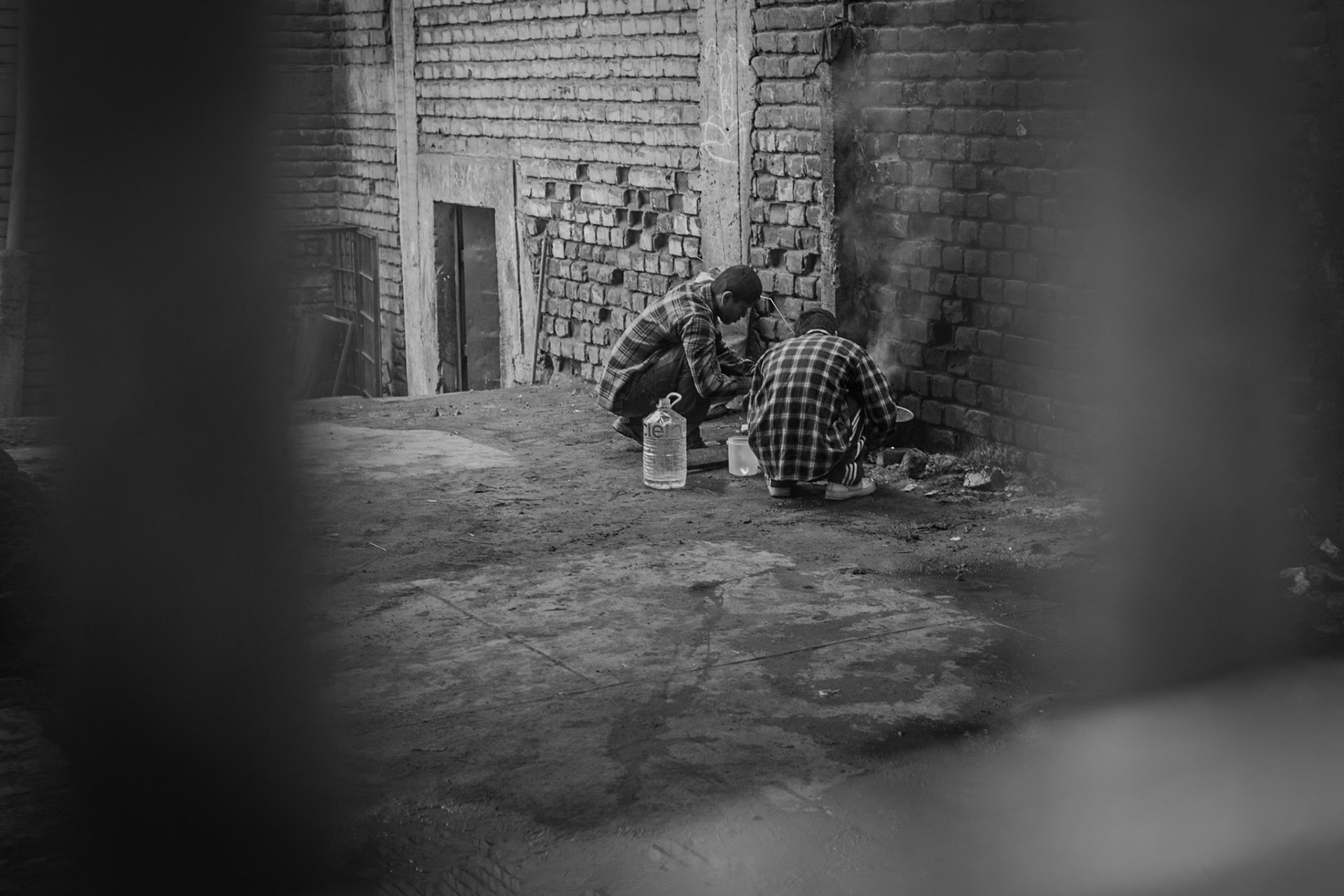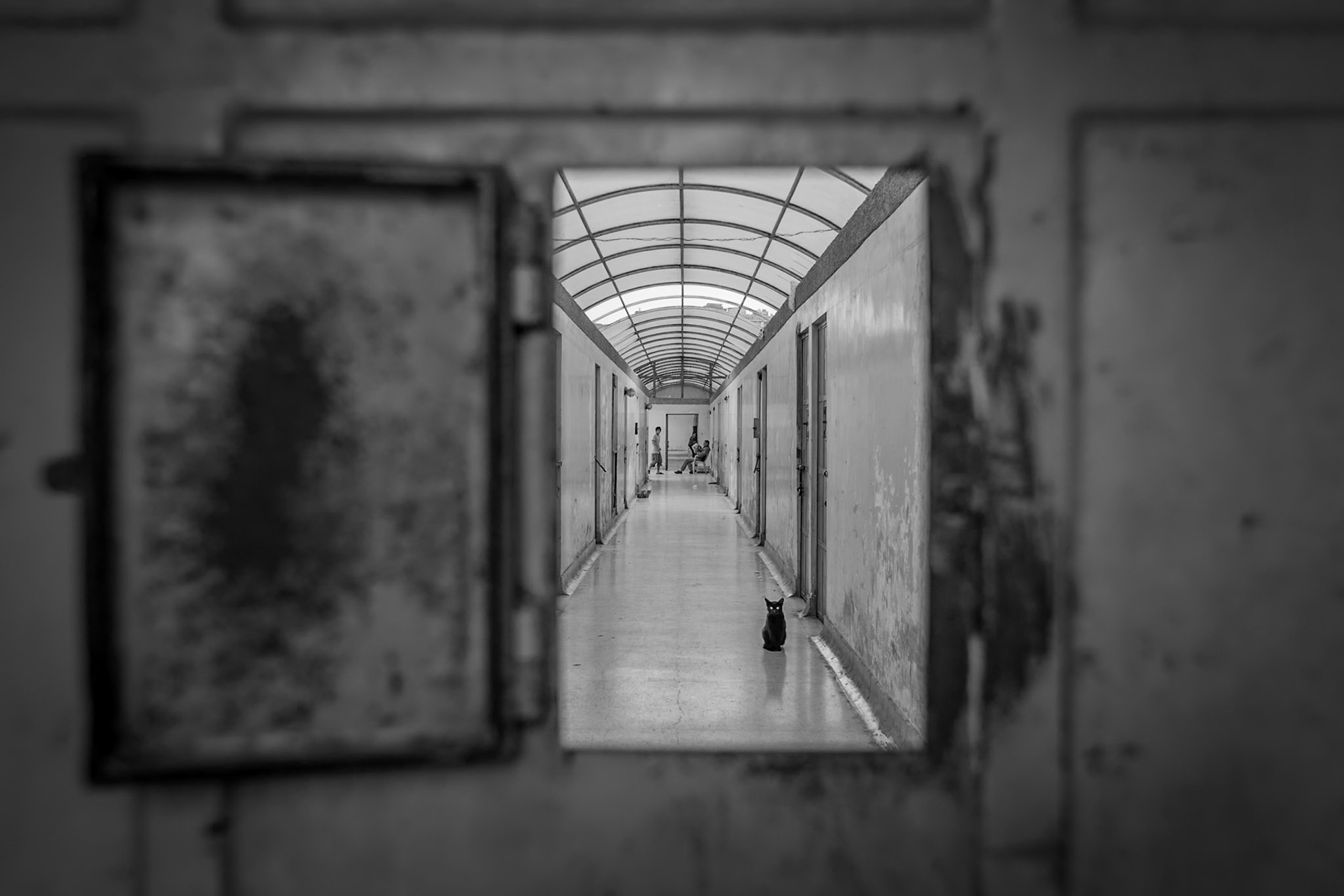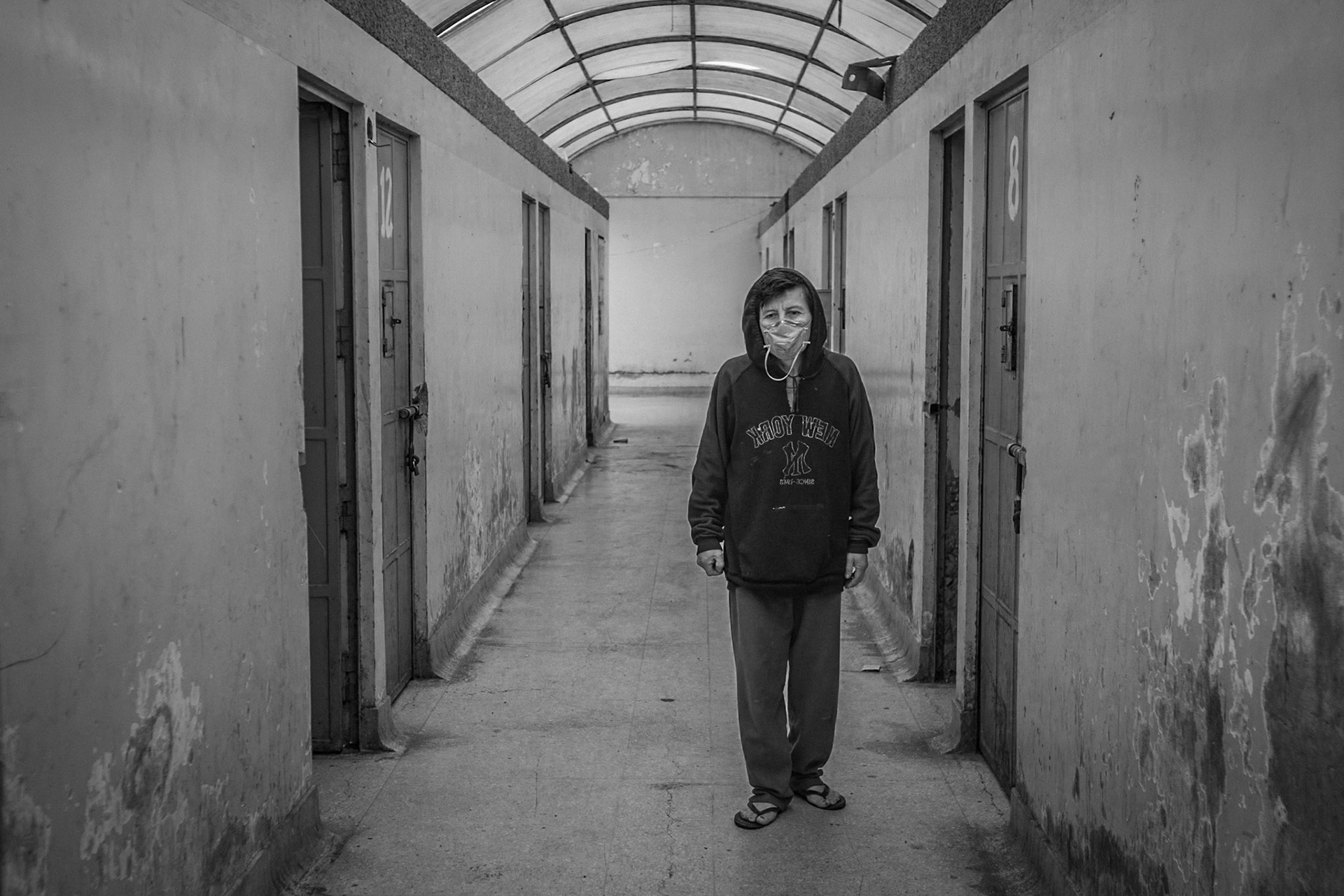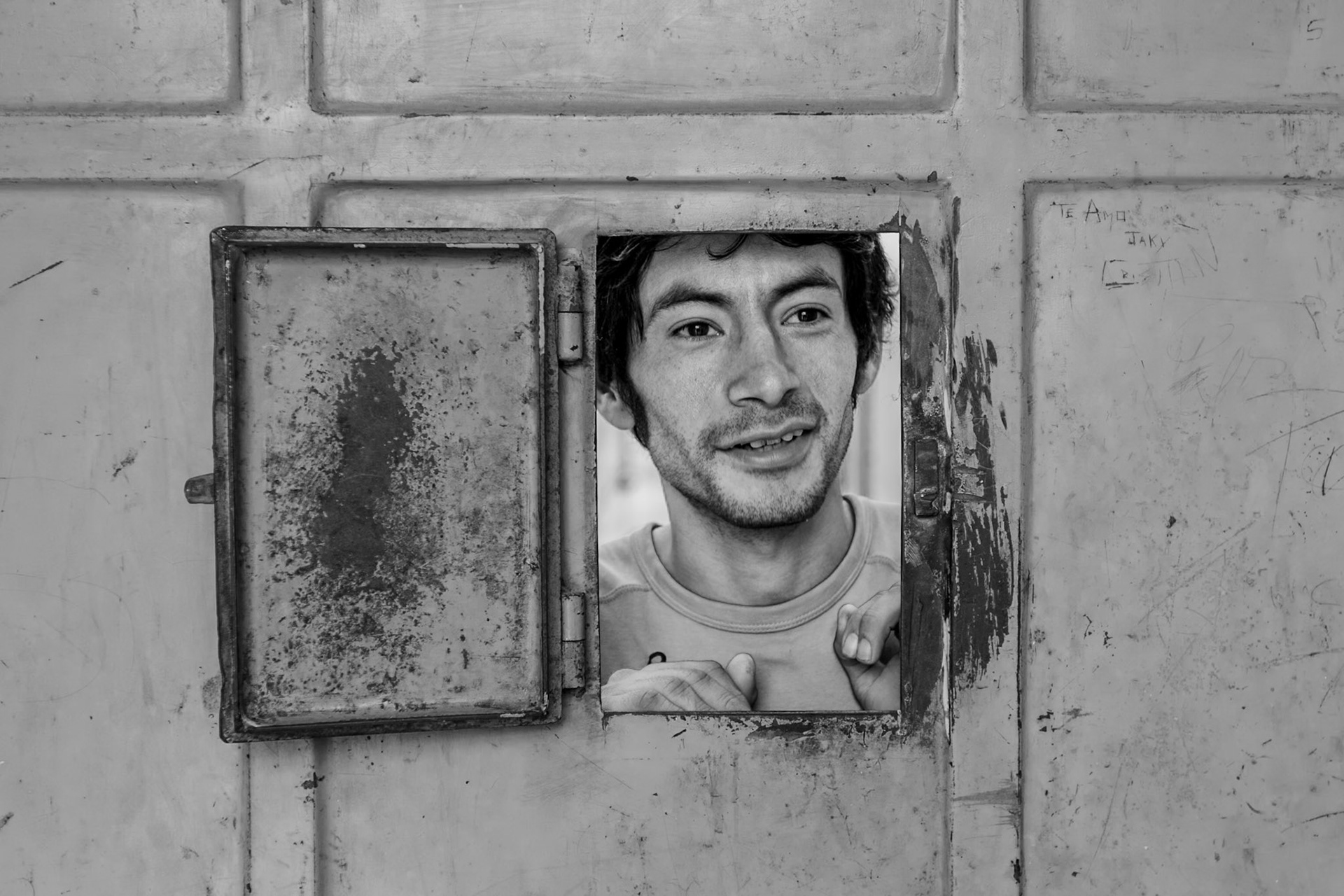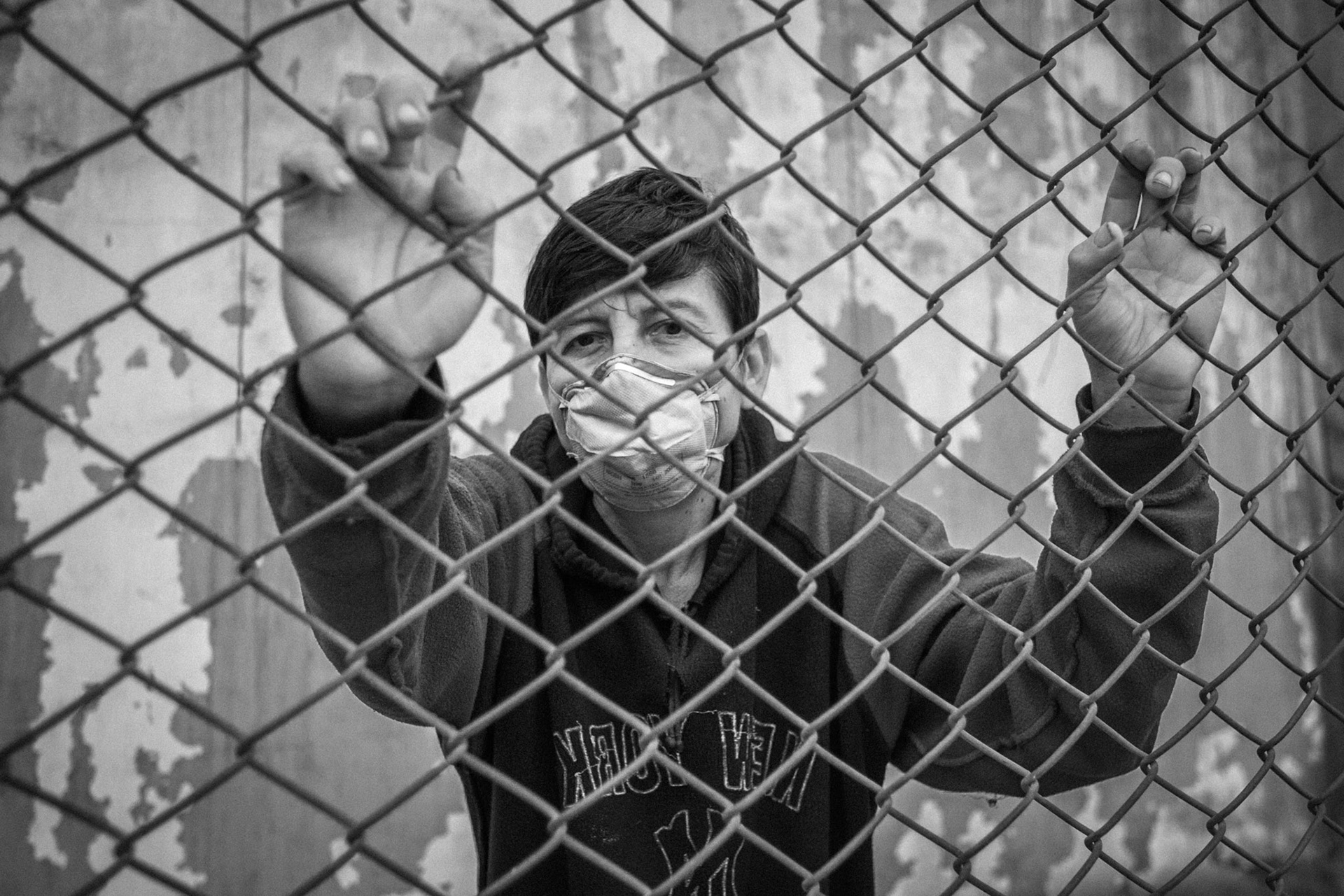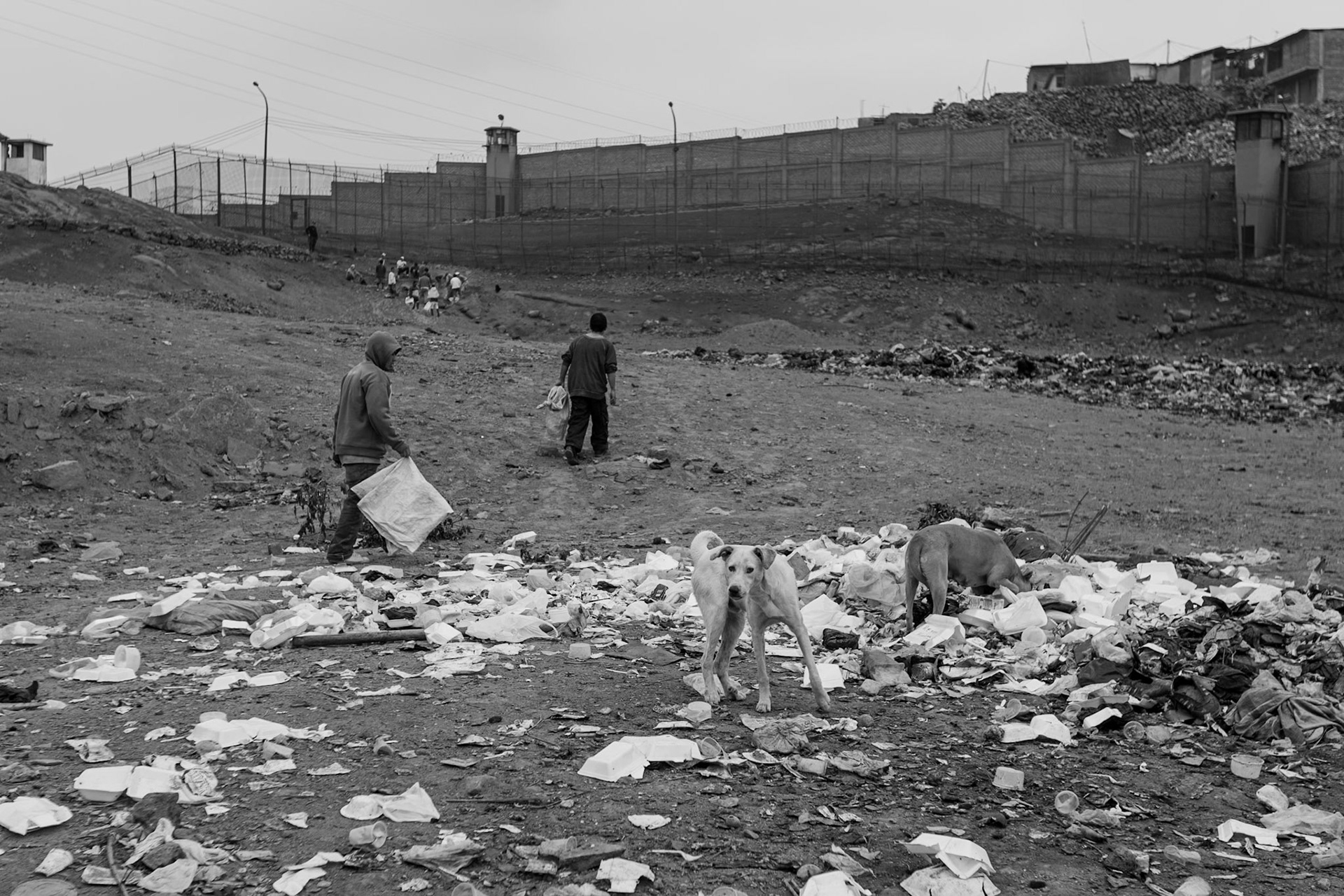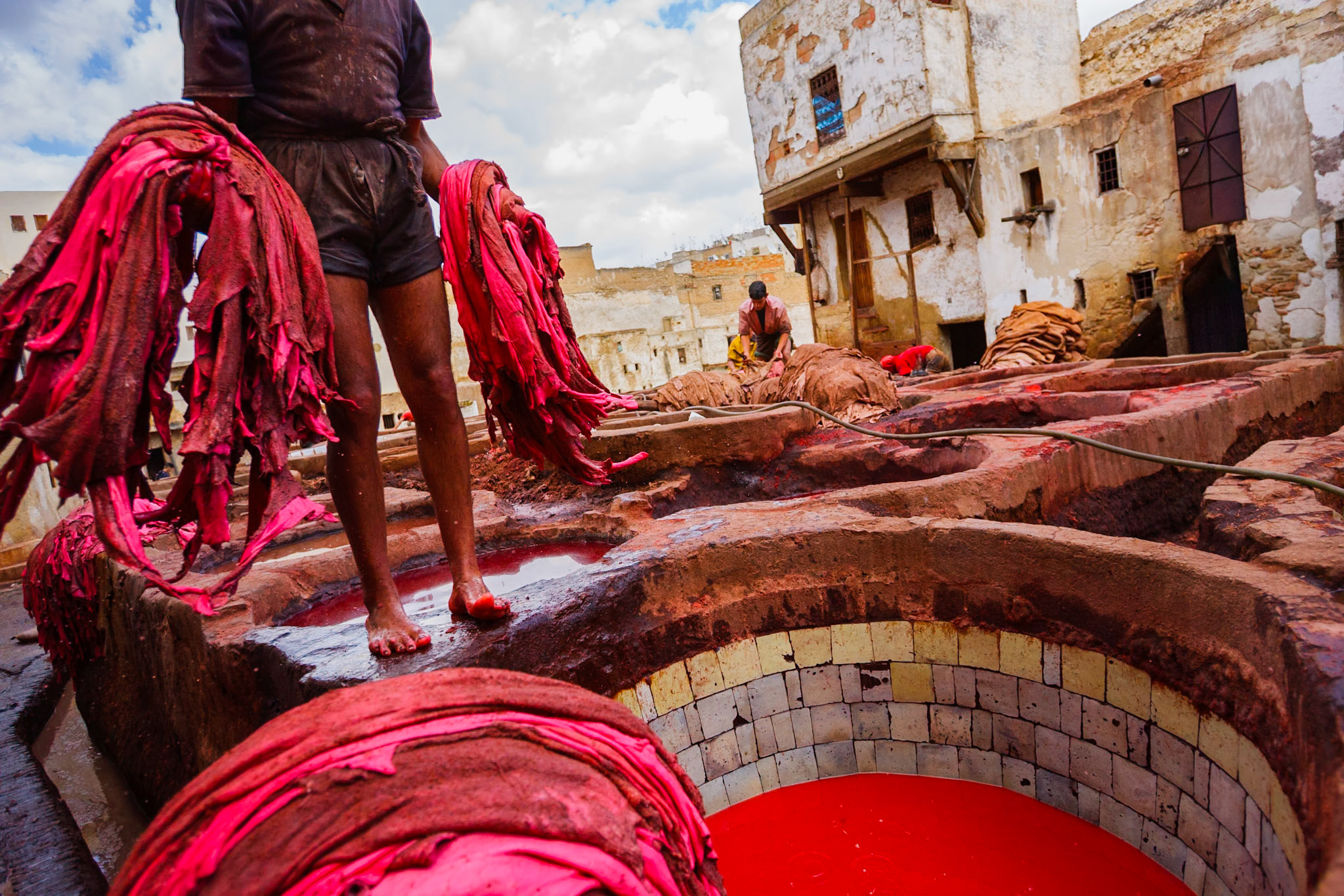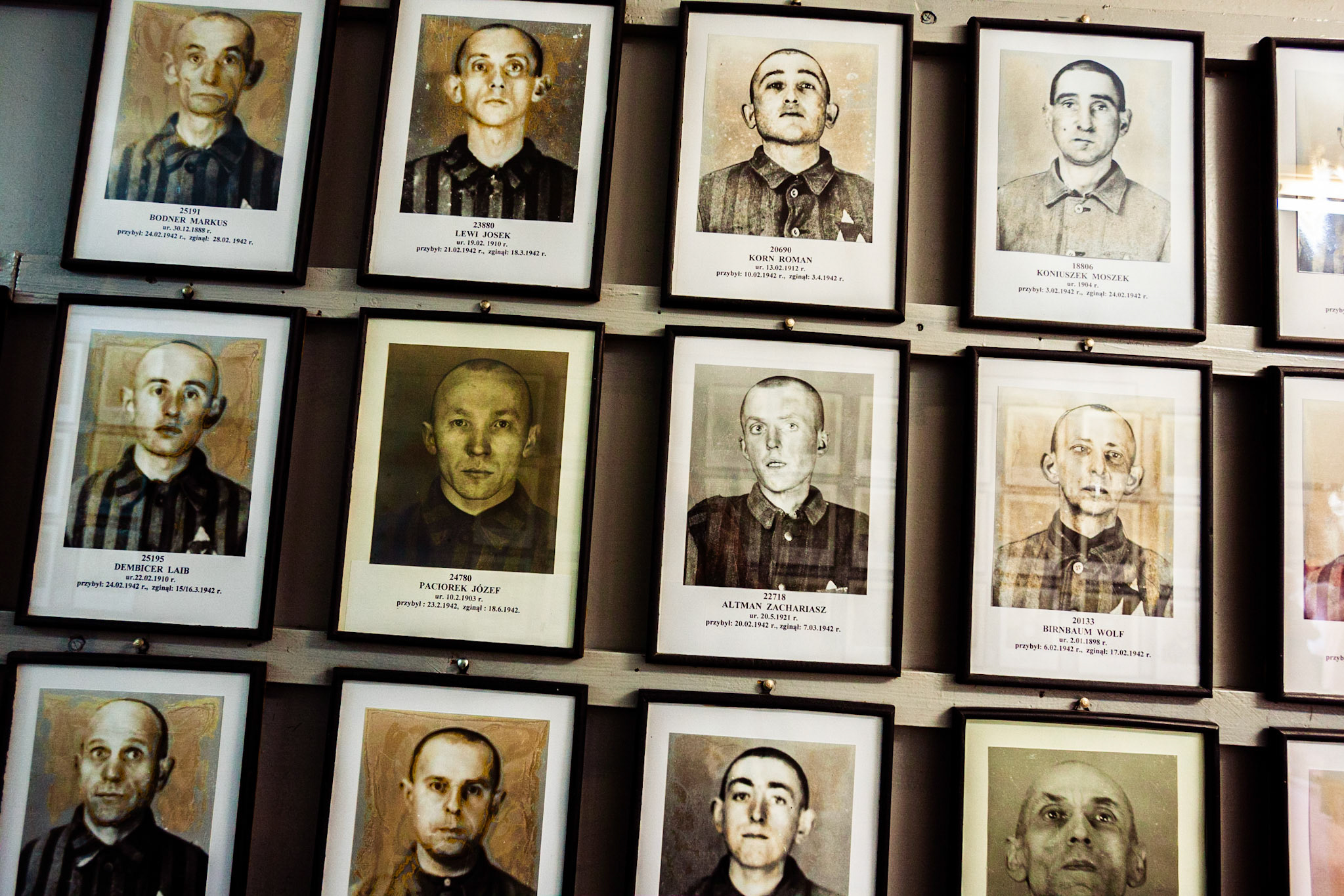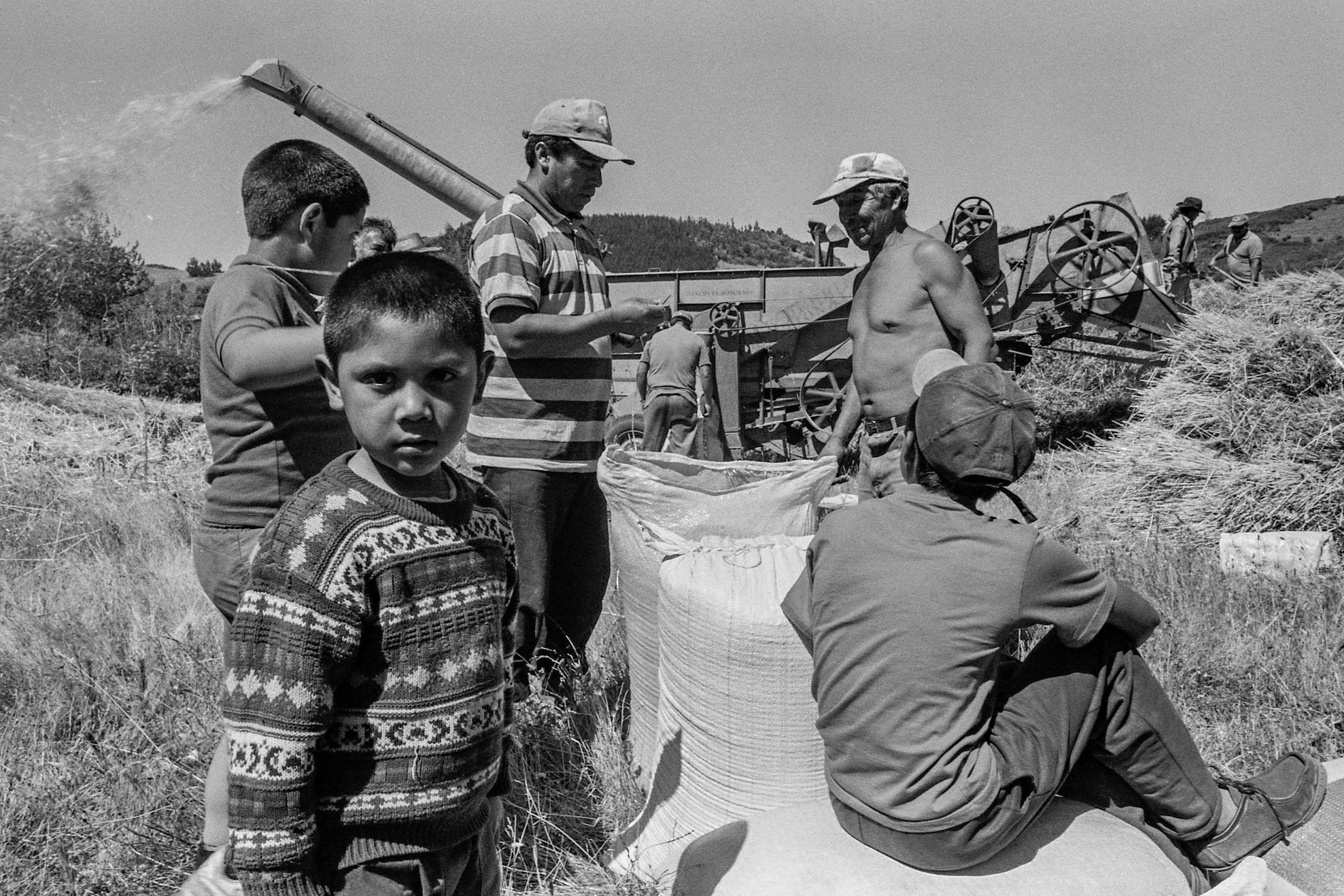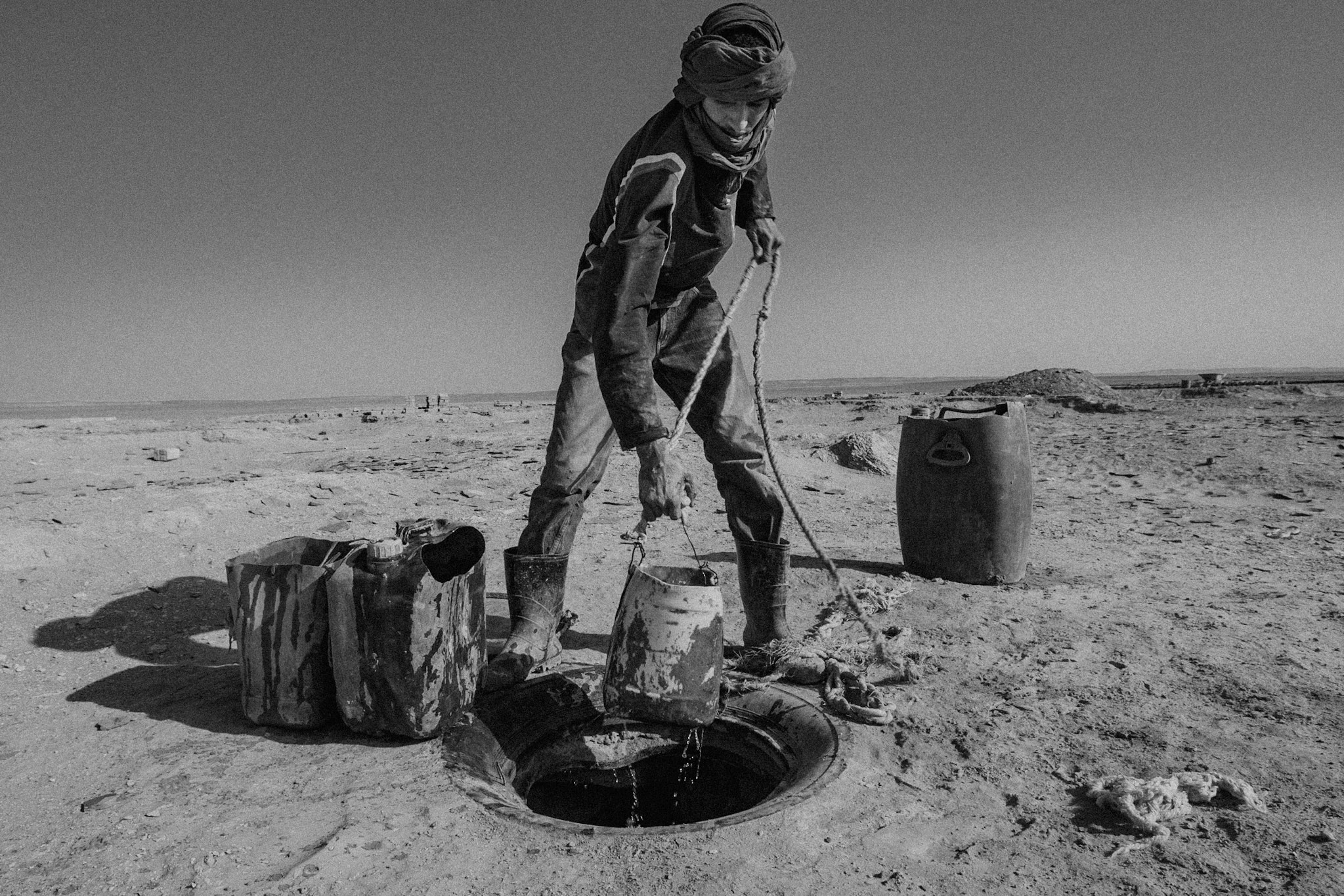
LURIGANCHO PRISON, SAN JUAN DE LURIGANCHO, LIMA, PERU: General view of the Lurigancho prison from one of the prison's watchtowers.

LURIGANCHO PRISON, SAN JUAN DE LURIGANCHO, LIMA, PERU: One of the prison's oldest inmates, with a 40-year sentence.

LURIGANCHO PRISON, SAN JUAN DE LURIGANCHO, LIMA, PERU: Two of the prisoners; One of them can not stand up and needs the constant help of others.

LURIGANCHO PRISON, SAN JUAN DE LURIGANCHO, LIMA, PERU, 2012: Drug dependent inmate in the infirmary. The bag he carries in his stomach is due to a bullet wound.

LURIGANCHO PENITENTIARY, SAN JUAN DE LURIGANCHO, LIMA, PERU: Inmates with fewer resources and who cannot afford their own food receive a ration of leftover food from each cellblock.

LURIGANCHO PRISON, SAN JUAN DE LURIGANCHO, LIMA, PERU, 2012: Inmates with fewer resources and who cannot afford their own food receive a ration of leftover food from each cellblock.

LURIGANCHO PENITENTIARY, SAN JUAN DE LURIGANCHO, LIMA, PERU: One of the prisoners cooking in the middle of the prison corridors.

LURIGANCHO PRISON, SAN JUAN DE LURIGANCHO, LIMA, PERU: Sale of fruits, vegetables and products of first necessity in the Jirón de la Unión corridor.

LURIGANCHO PRISON, SAN JUAN DE LURIGANCHO, LIMA, PERU: Sale of fruits and vegetables in the Jirón de la Unión corridor.

LURIGANCHO PRISON, SAN JUAN DE LURIGANCHO, LIMA, PERU: Hairdresser for hire in one of the prison's outer corridors.

LURIGANCHO PRISON, SAN JUAN DE LURIGANCHO, LIMA, PERU: Young inmates tending to the grocery store in the prison.

LURIGANCHO PRISON, SAN JUAN DE LURIGANCHO, LIMA, PERU: Women's Visiting Day where the wife of the prison manager and an inmate work together serving meals to visiting families and charging cash for restaurant services.

LURIGANCHO PRISON, SAN JUAN DE LURIGANCHO, LIMA, PERU: One of the inmates who works as a transporter tries to move, with the help of one of the police officers, the merchandise cart sent by relatives from abroad. Many of these products are shipped from abroad to supply the food establishments run by the prisoners themselves.

LURIGANCHO PRISON, SAN JUAN DE LURIGANCHO, LIMA, PERU: Prison director (left: T. Garay), and one of the senior police officers (right: A. Santa Cruz) on inspection duty.

LURIGANCHO PRISON, SAN JUAN DE LURIGANCHO, LIMA, PERU: Television interview with the prison director (T. Garay) after seizing prohibited supplies brought in by one of the women on visiting day. In the background, a minor who accompanied the detained woman.

LURIGANCHO PRISON, SAN JUAN DE LURIGANCHO, LIMA, PERU: The days of the women's visit the pLURIGANCHO PRISON, SAN JUAN DE LURIGANCHO, LIMA, PERU: Elderly woman being attended to by an officer on women's visiting day.opulation of the prison is doubled.

LURIGANCHO PRISON, SAN JUAN DE LURIGANCHO, LIMA, PERU: An elderly woman on the day of the women's visit.

LURIGANCHO PRISON, SAN JUAN DE LURIGANCHO, LIMA, PERU: An elderly woman on women's visitation day where the prison doubles its population.

LURIGANCHO PRISON, SAN JUAN DE LURIGANCHO, LIMA, PERU: Contradictory sign prohibiting cell phones at the entrance to one of the cells. Behind the bars, two prisoners on security duty.

LURIGANCHO PRISON, SAN JUAN DE LURIGANCHO, LIMA, PERU: Recovering from a stroke in his cell.

LURIGANCHO PRISON, SAN JUAN DE LURIGANCHO, LIMA, PERU: Overcrowding in one of the shared cells.

LURIGANCHO PRISON, SAN JUAN DE LURIGANCHO, LIMA, PERU: Overcrowding in one of the shared cells.

LURIGANCHO PRISON, SAN JUAN DE LURIGANCHO, LIMA, PERU: Overcrowding in one of the shared cells.

LURIGANCHO PRISON, SAN JUAN DE LURIGANCHO, LIMA, PERU: As a consequence of the overpopulation in the prison the prisoners are in charge of building their new rooms with materials that they buy.

LURIGANCHO PRISON, SAN JUAN DE LURIGANCHO, LIMA, PERU: As a consequence of the overpopulation in the prison the prisoners are in charge of building their new rooms with materials that they buy.

LURIGANCHO PRISON, SAN JUAN DE LURIGANCHO, LIMA, PERU: Overcrowding causes many inmates to build their cells-houses on the roof of the pavilions. Some of them who live there work as watchmen and receive the name of "techeros".

LURIGANCHO PRISON, SAN JUAN DE LURIGANCHO, LIMA, PERU: Three young prisoners posing on the prison roof with a mascot.

LURIGANCHO PRISON, SAN JUAN DE LURIGANCHO, LIMA, PERU: View of the cells-houses built on the roofs of several pavilions. Television antennas can be seen on the prison roofs.

LURIGANCHO PRISON, SAN JUAN DE LURIGANCHO, LIMA, PERU: One of the prisoners reading the newspaper.

LURIGANCHO PRISON, SAN JUAN DE LURIGANCHO, LIMA, PERU: religion; reading of Bible passages.

LURIGANCHO PRISON, SAN JUAN DE LURIGANCHO, LIMA, PERU: religion; reading of Bible passages.

LURIGANCHO PRISON, SAN JUAN DE LURIGANCHO, LIMA, PERU: Prisoners in the prison library during reading and discussion.

LURIGANCHO PRISON, SAN JUAN DE LURIGANCHO, LIMA, PERU: A former inmate who now works as a social worker poses during halftime of a soccer match between prisoners as an integration initiative.

LURIGANCHO PRISON, SAN JUAN DE LURIGANCHO, LIMA, PERU: Soccer match between prisoners from the prison roof.

LURIGANCHO PRISON, SAN JUAN DE LURIGANCHO, LIMA, PERU: Two of the low-income inmates cooking on the floor in one of the poorest areas of the prison.

LURIGANCHO PRISON, SAN JUAN DE LURIGANCHO, LIMA, PERU: View of the corridor for tuberculosis patients, isolated to prevent the spread of tuberculosis.

LURIGANCHO PRISON, SAN JUAN DE LURIGANCHO, LIMA, PERU: View of the corridor for tuberculosis patients, isolated to prevent the spread of tuberculosis.

LURIGANCHO PRISON, SAN JUAN DE LURIGANCHO, LIMA, PERU: View of the corridor for tuberculosis patients, isolated to prevent the spread of tuberculosis.

LURIGANCHO PRISON, SAN JUAN DE LURIGANCHO, LIMA, PERU: One of the prisoners with extremely resistant tuberculosis in the tuberculosis corridor, isolated to avoid the spread of tuberculosis.

LURIGANCHO PRISON, SAN JUAN DE LURIGANCHO, LIMA, PERU: One of the prisoners with extremely resistant tuberculosis in the tuberculosis corridor, isolated to avoid the spread of tuberculosis.

LURIGANCHO PRISON, SAN JUAN DE LURIGANCHO, LIMA, PERU: prisoners and garbage dump outside the prison.
